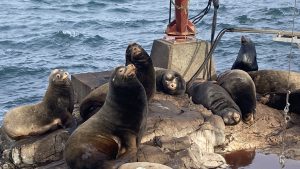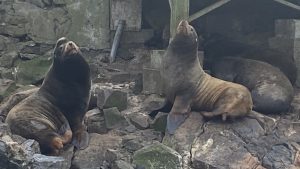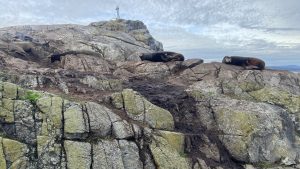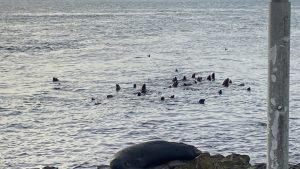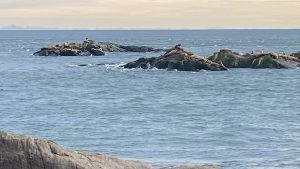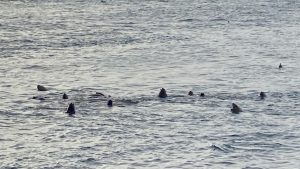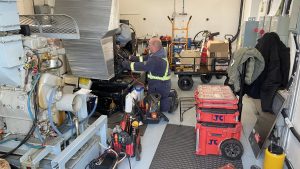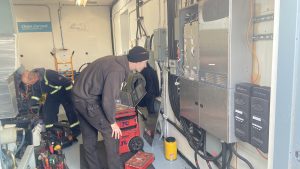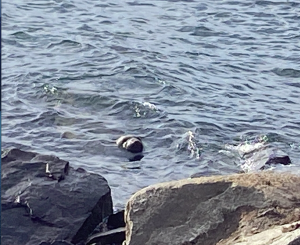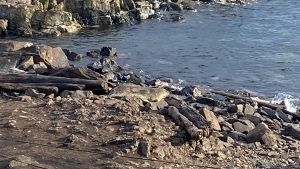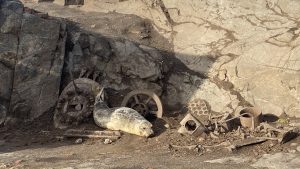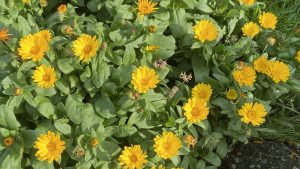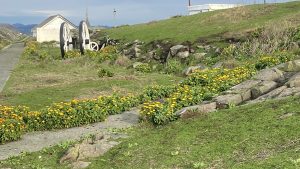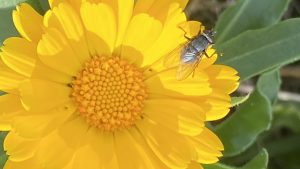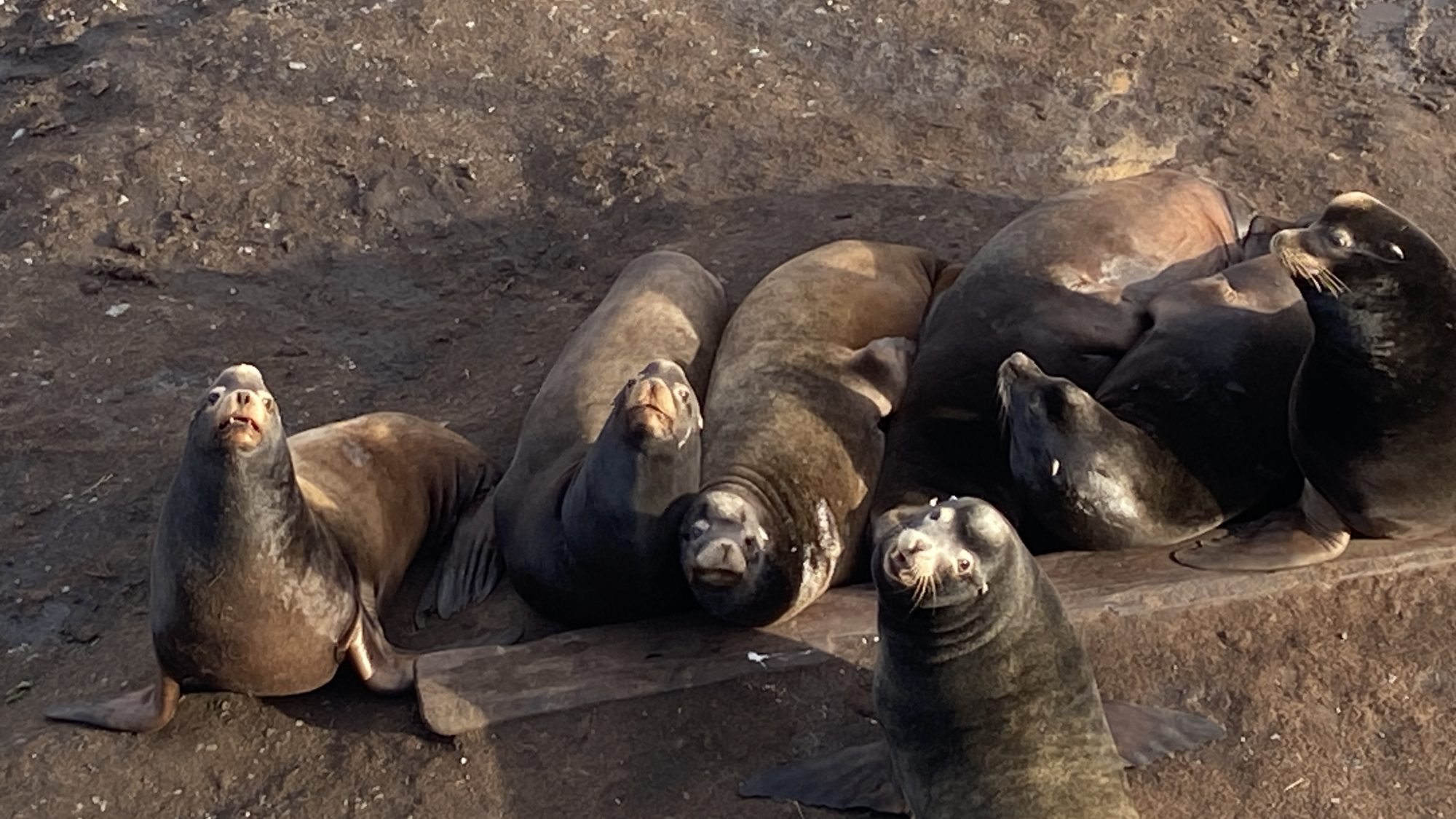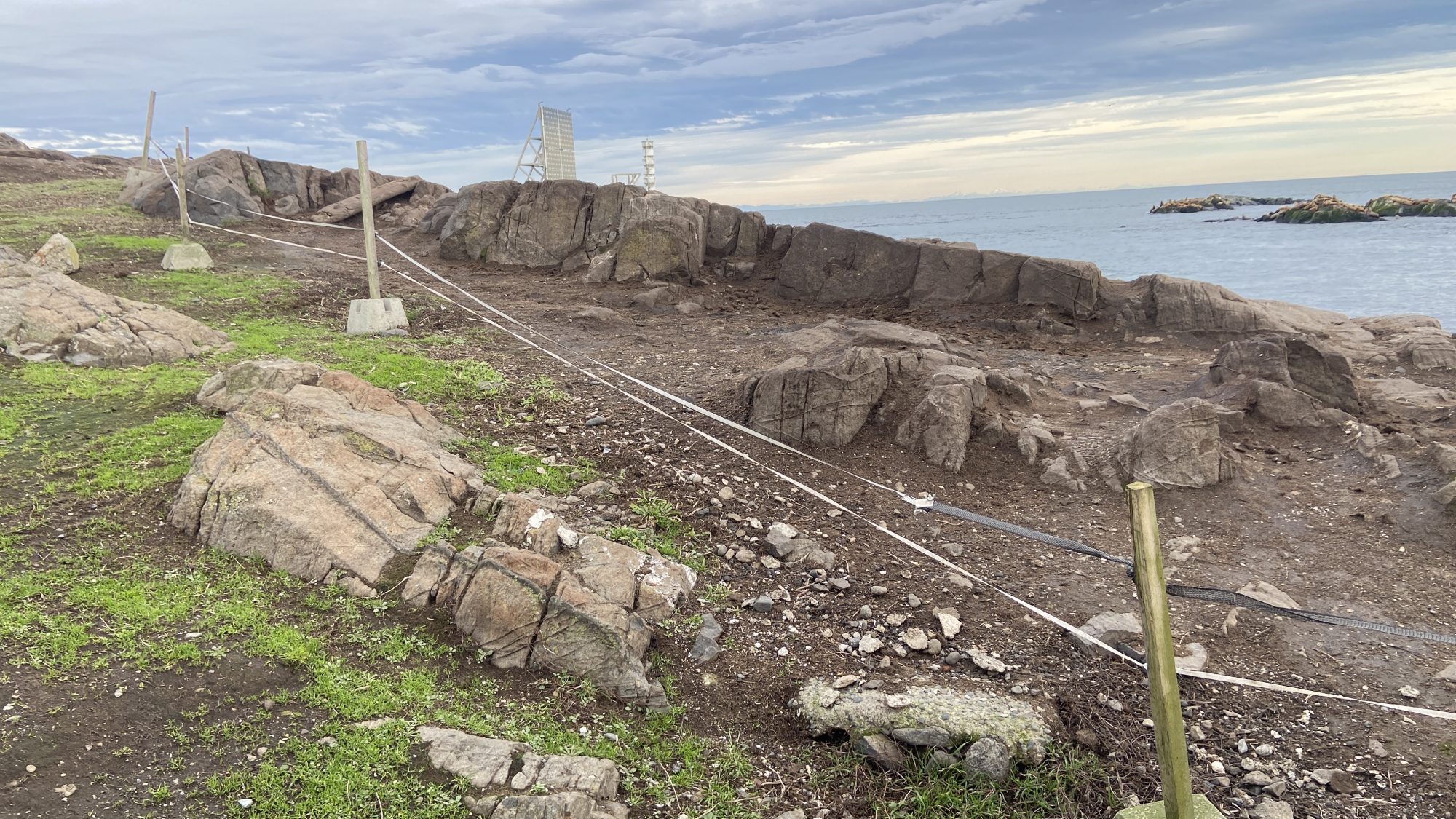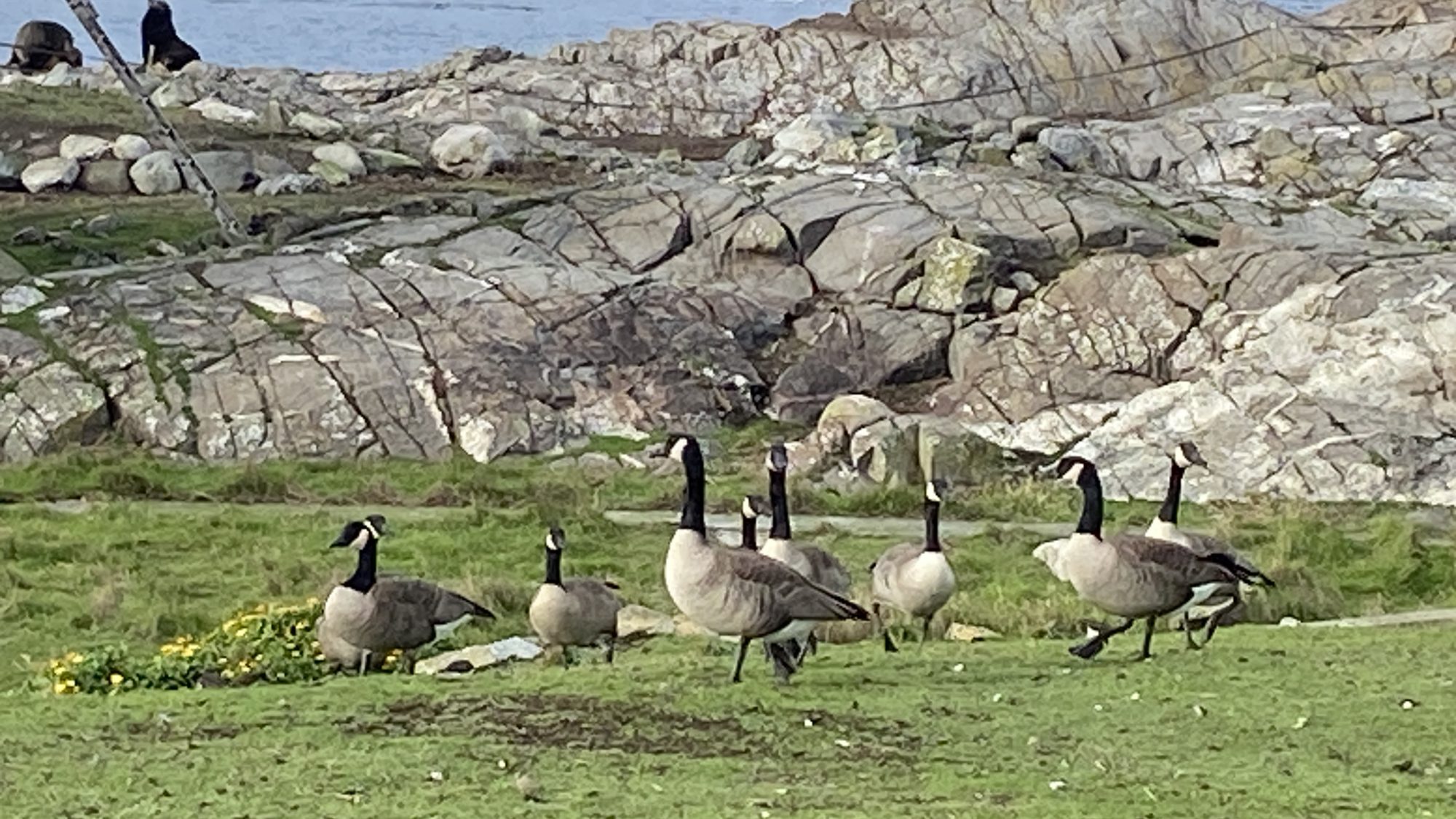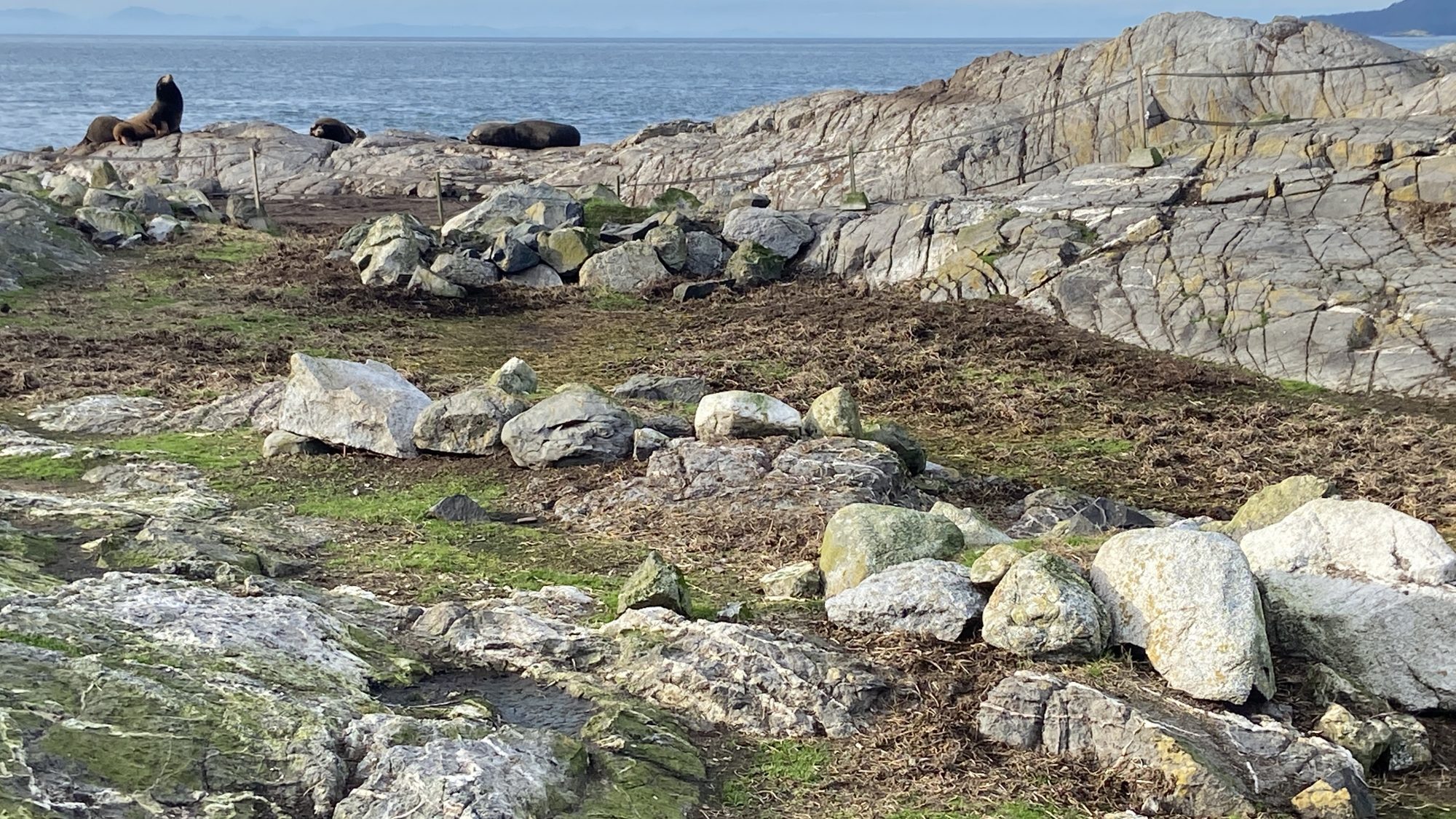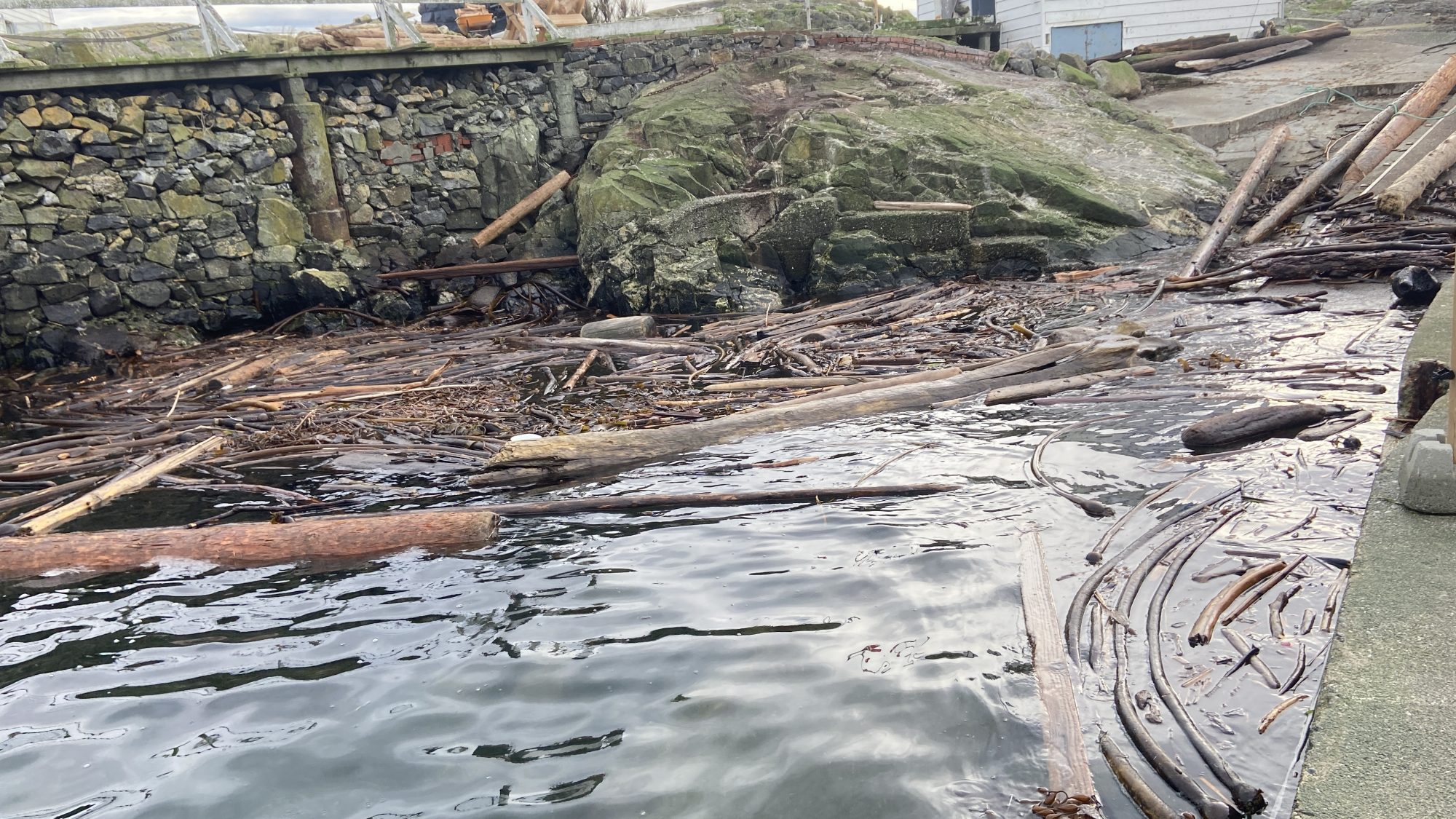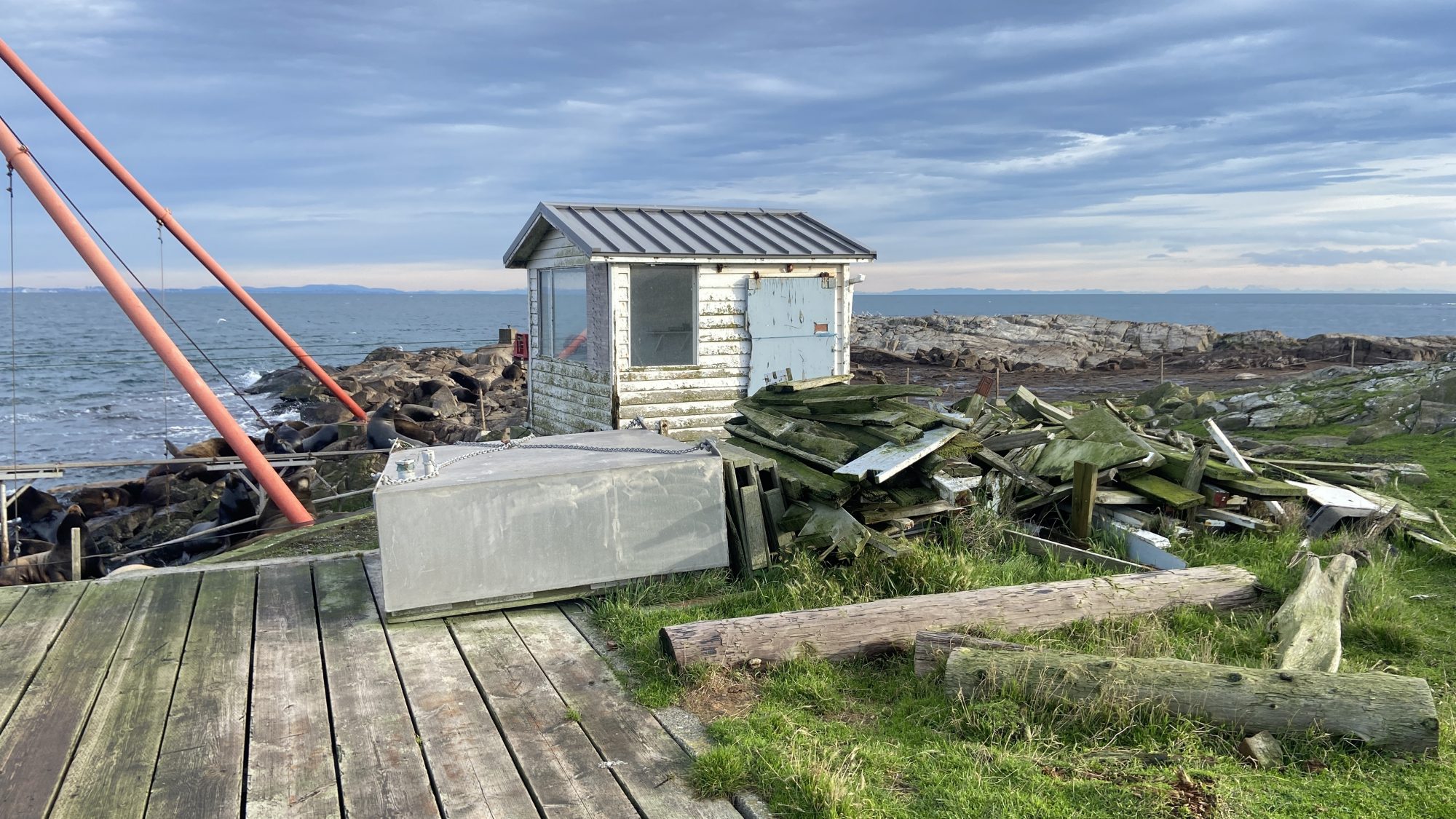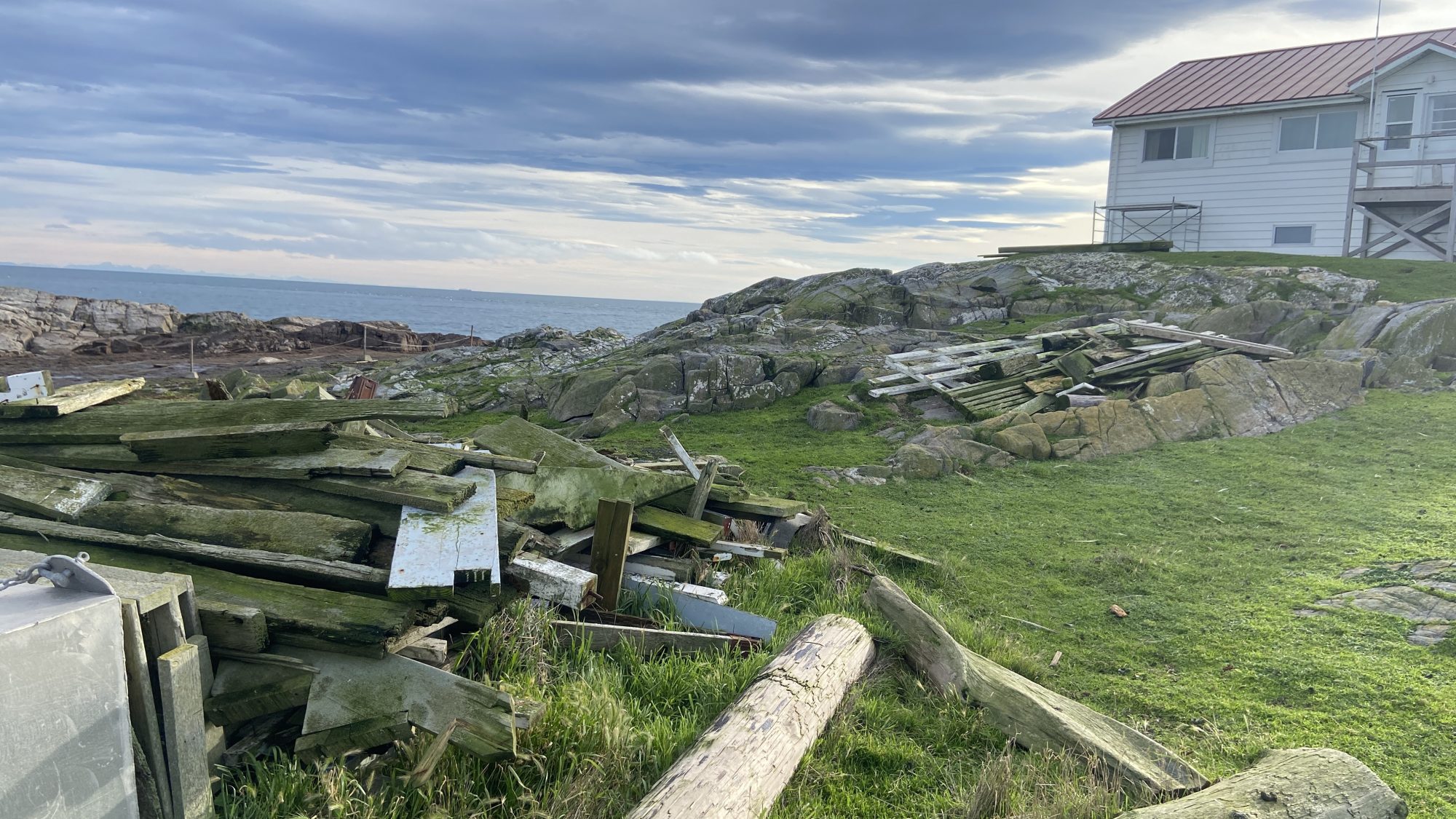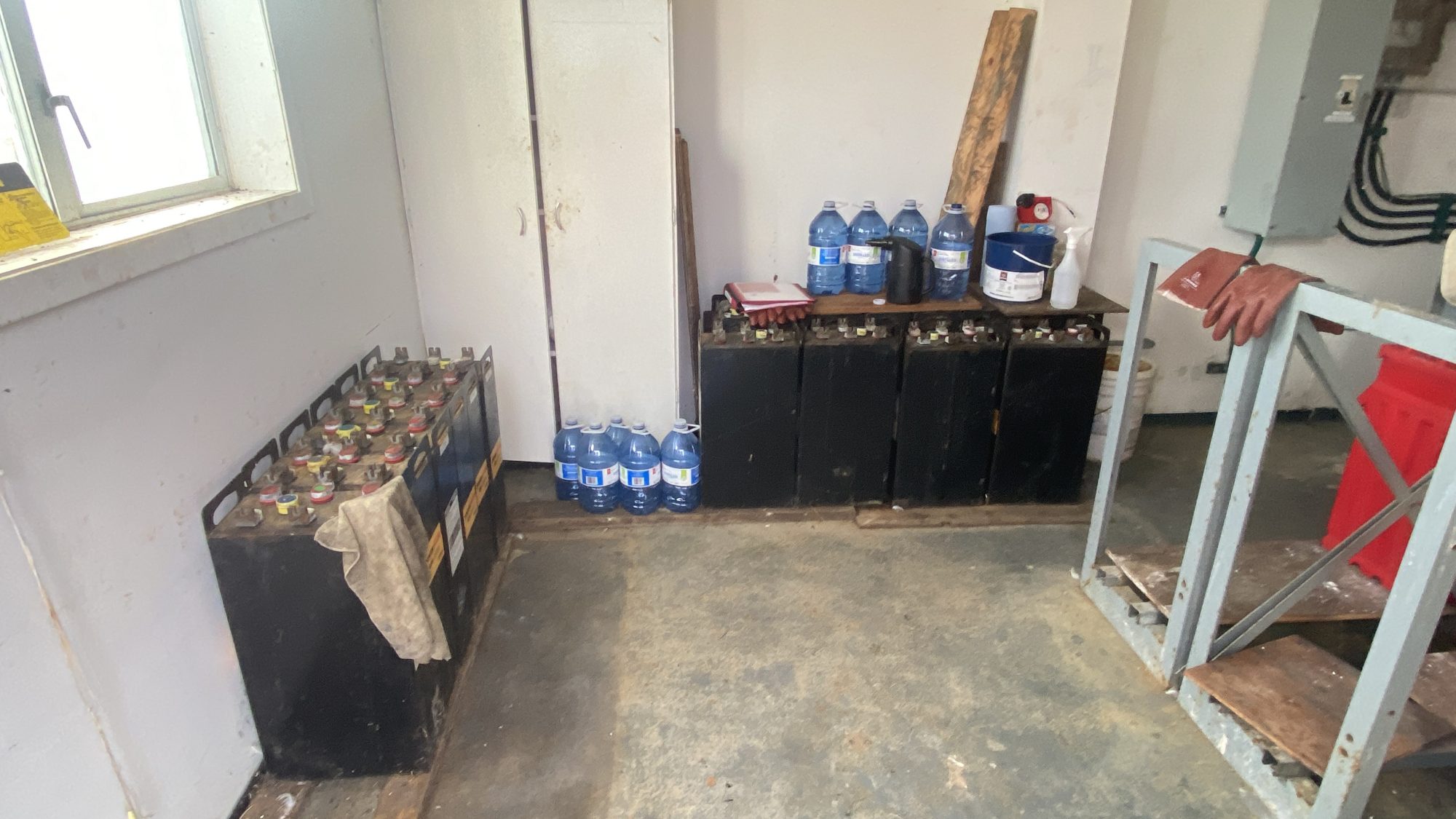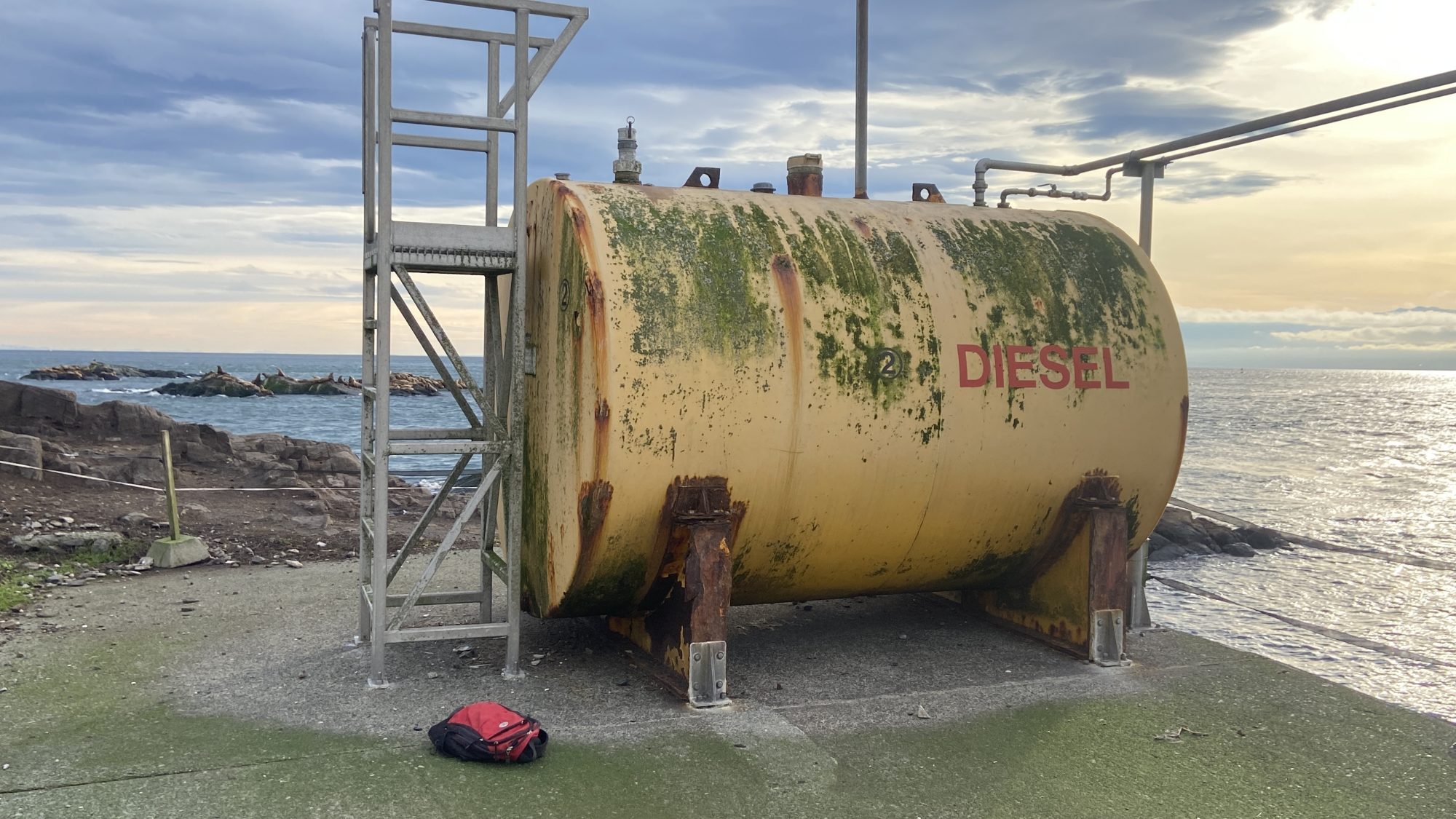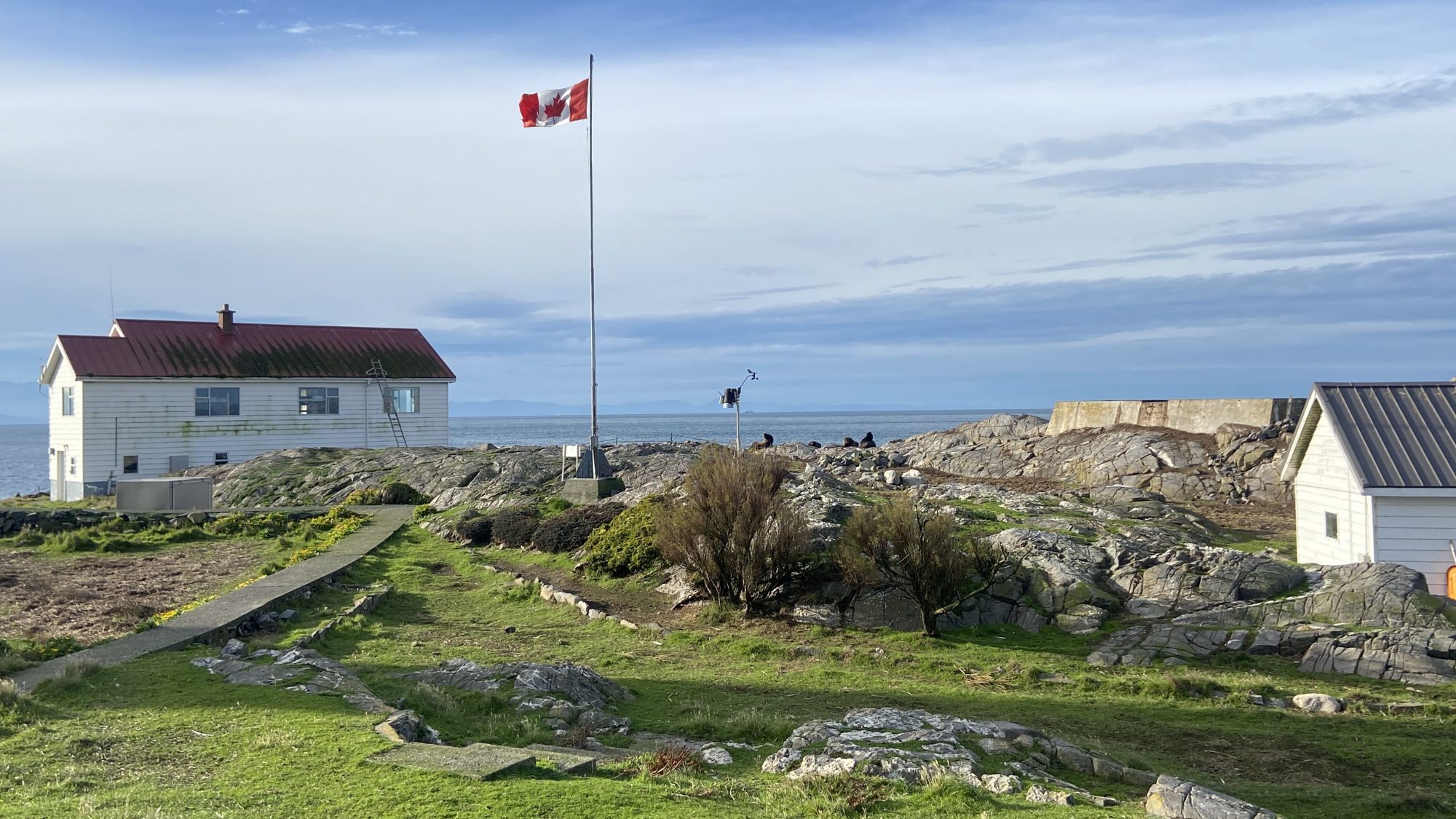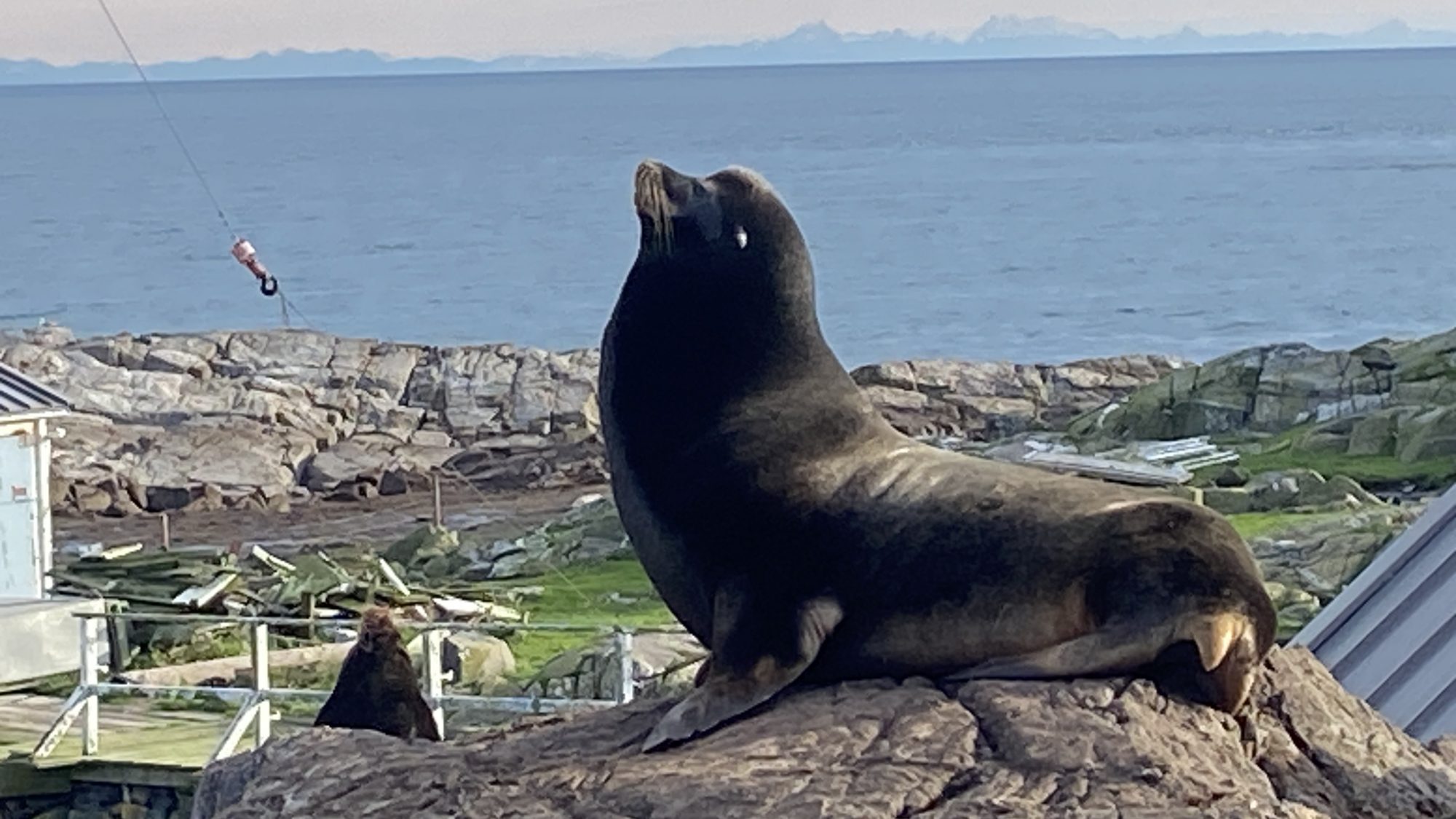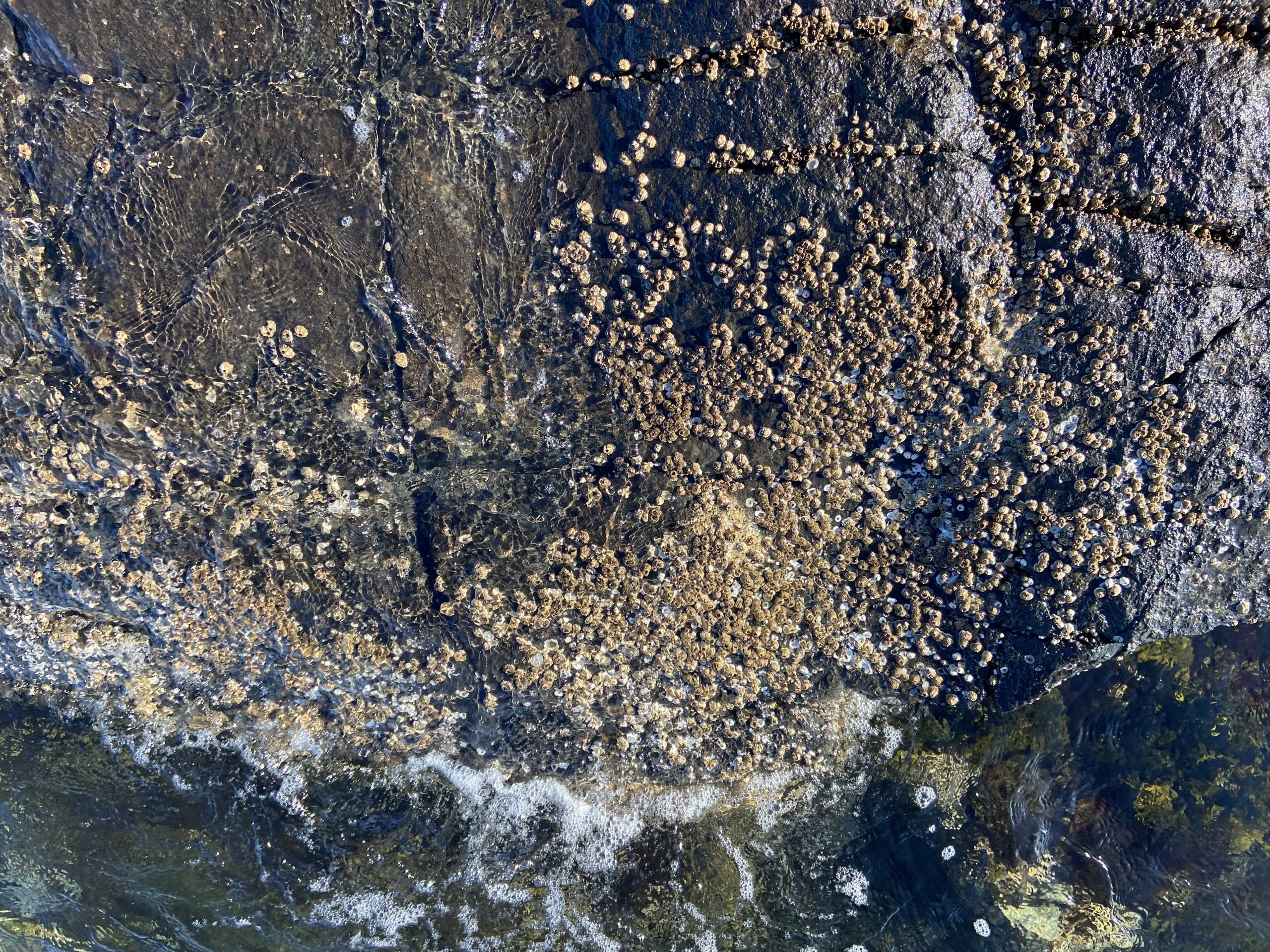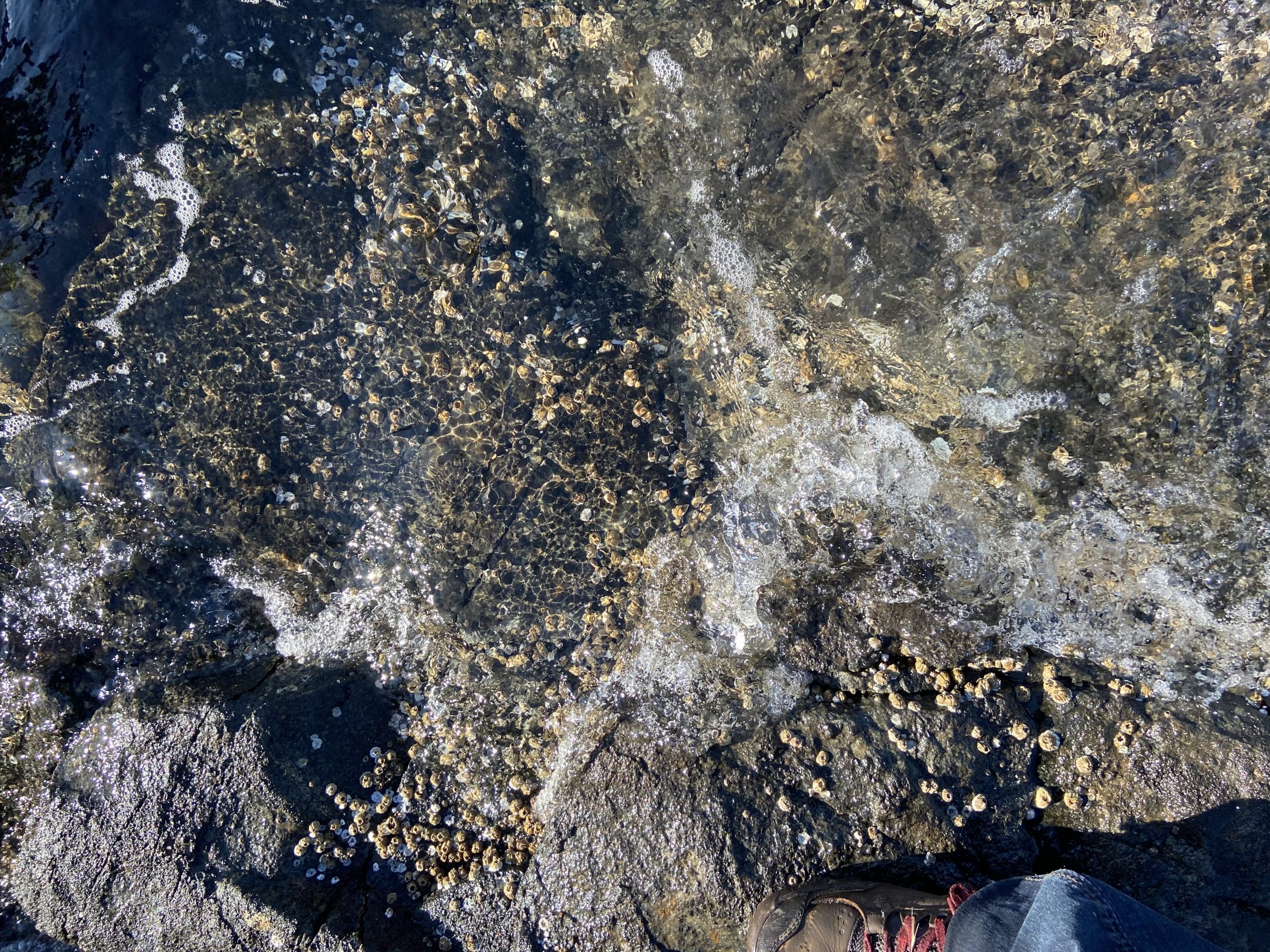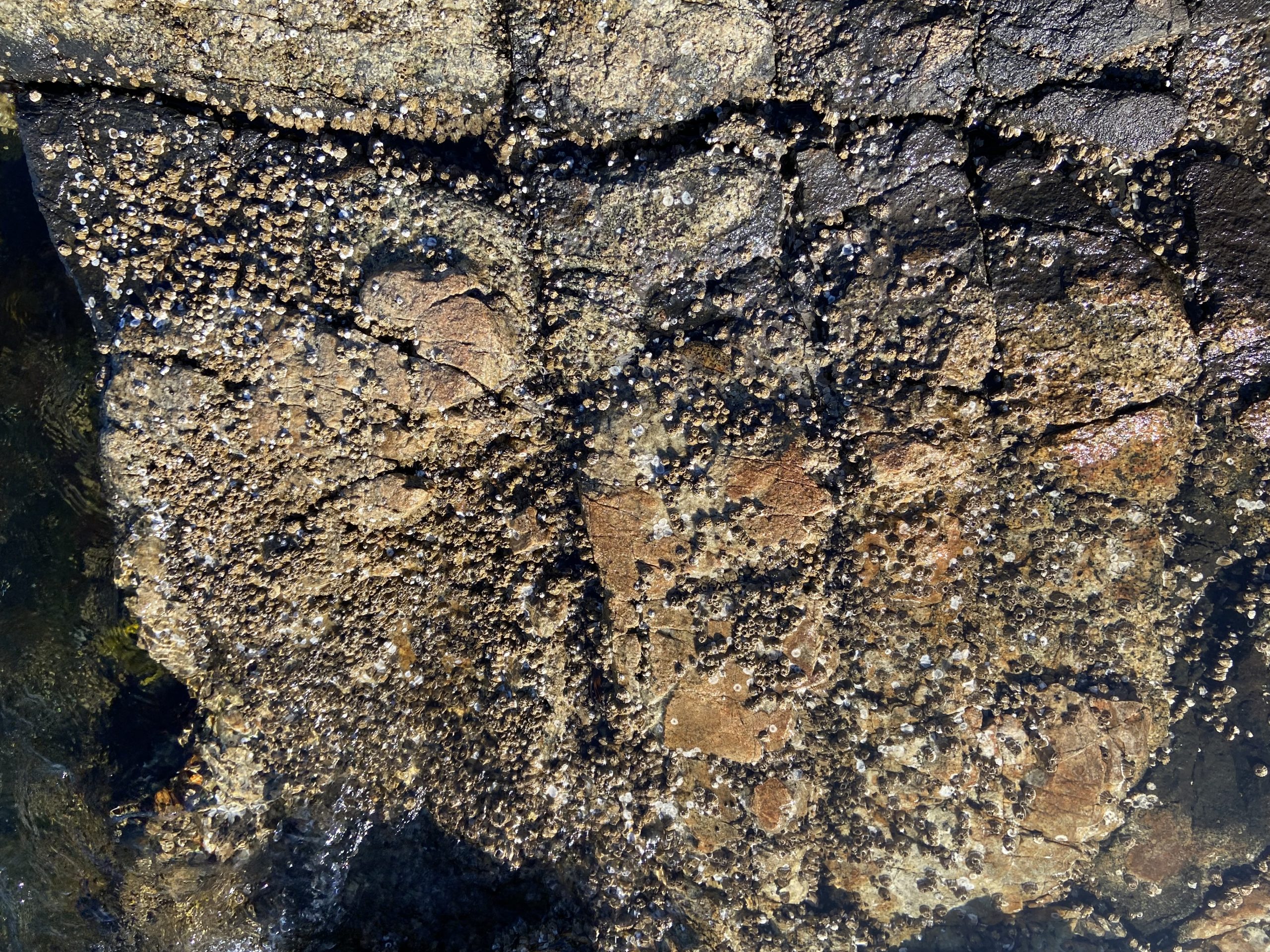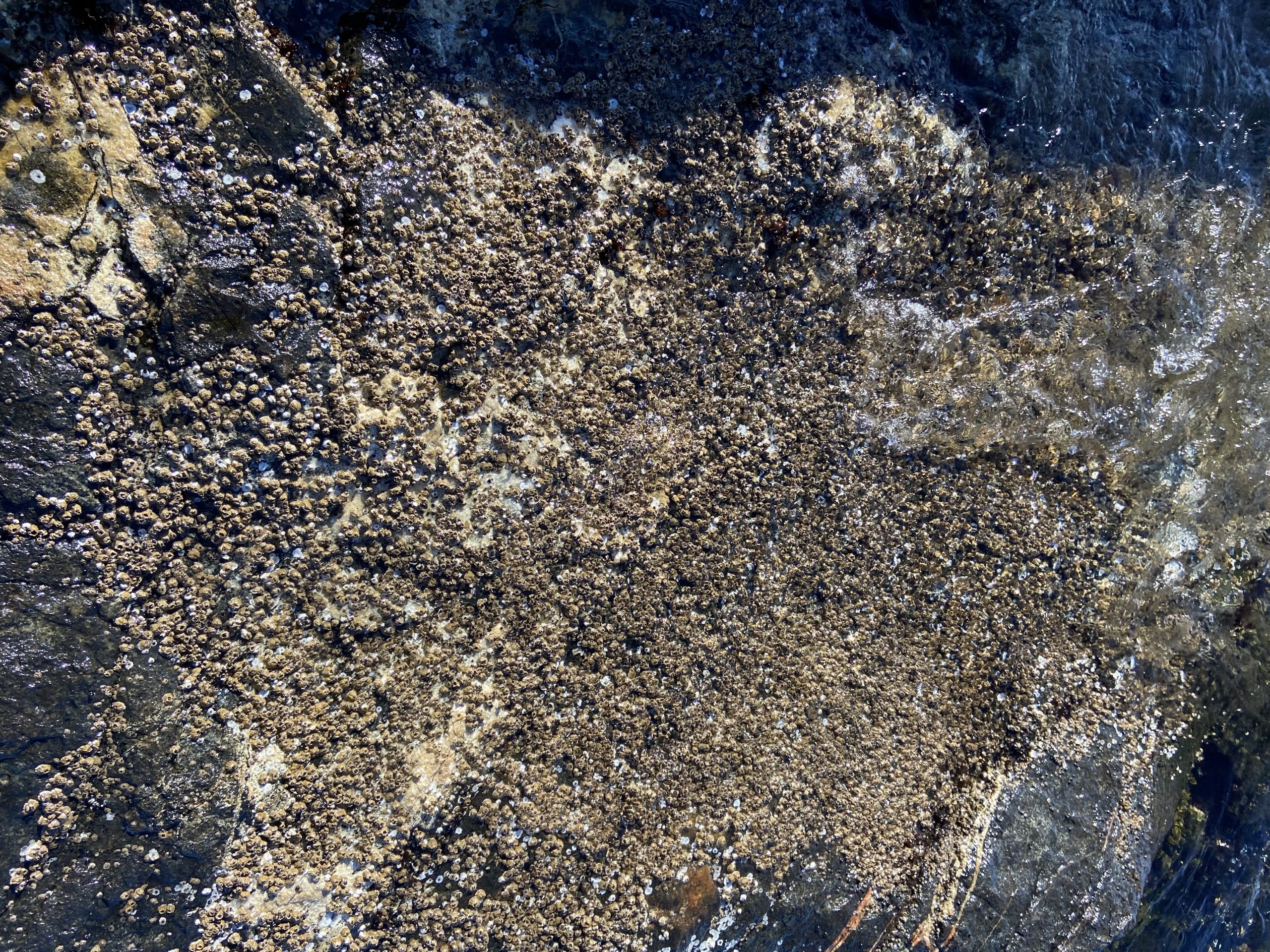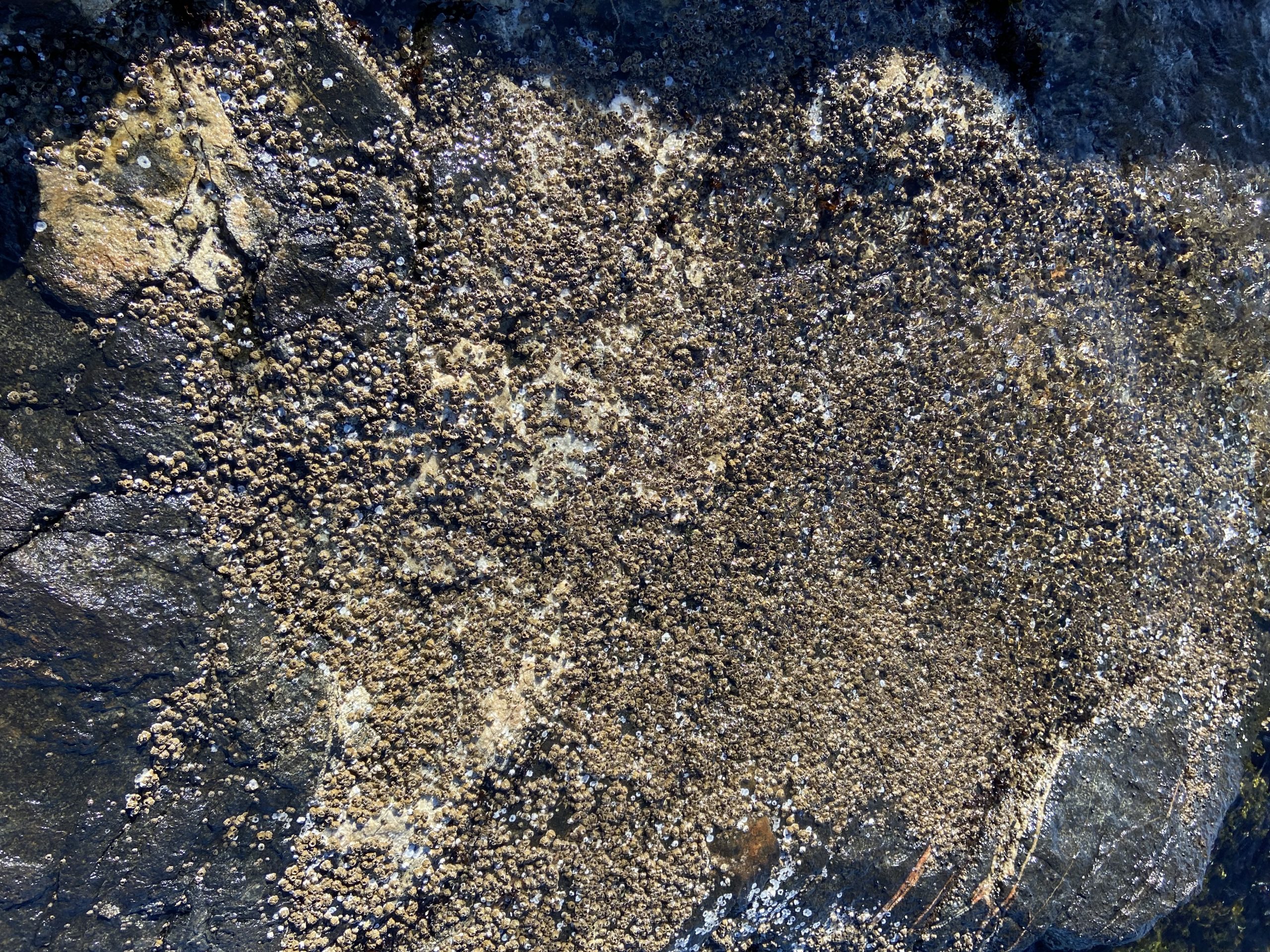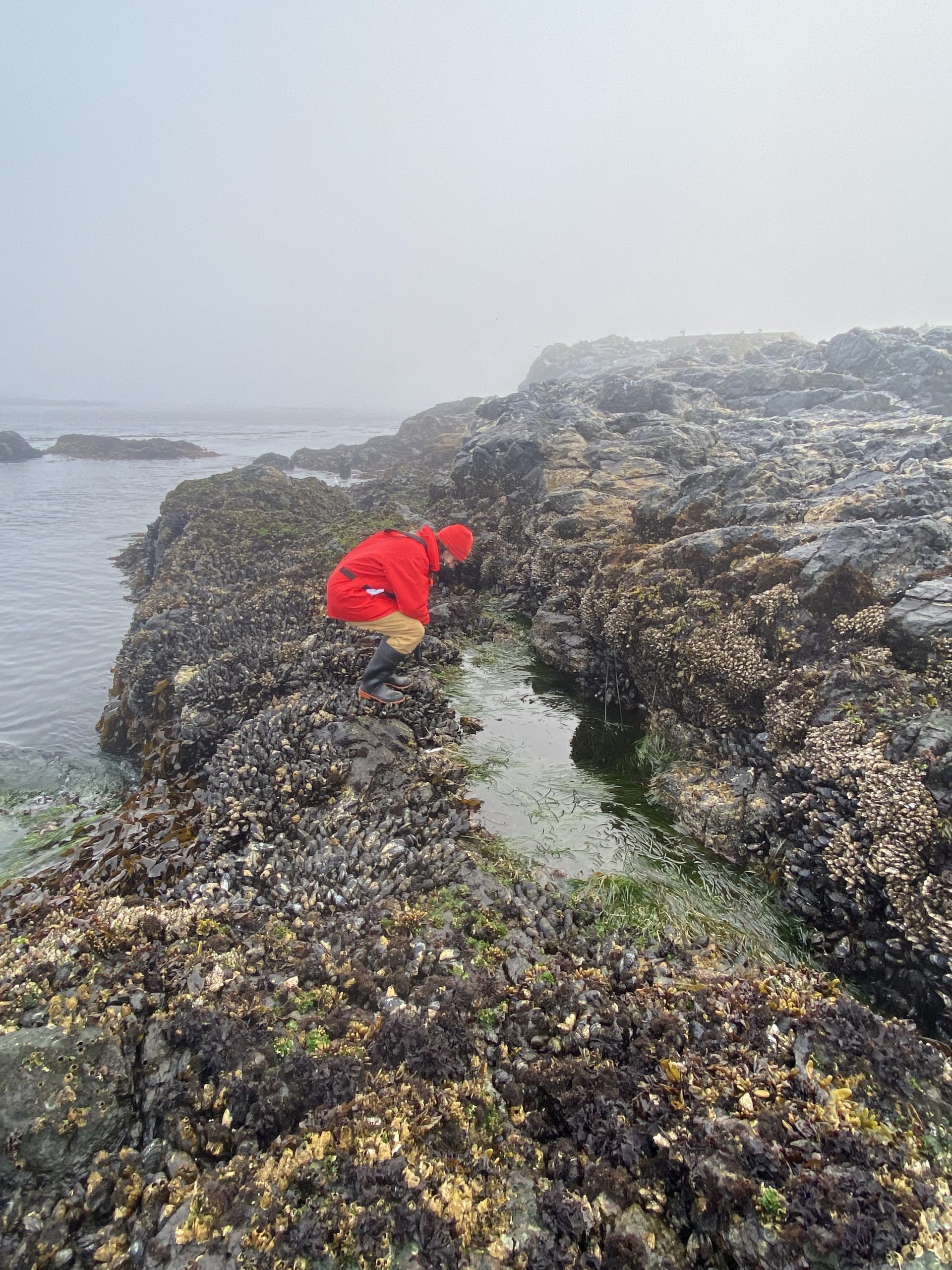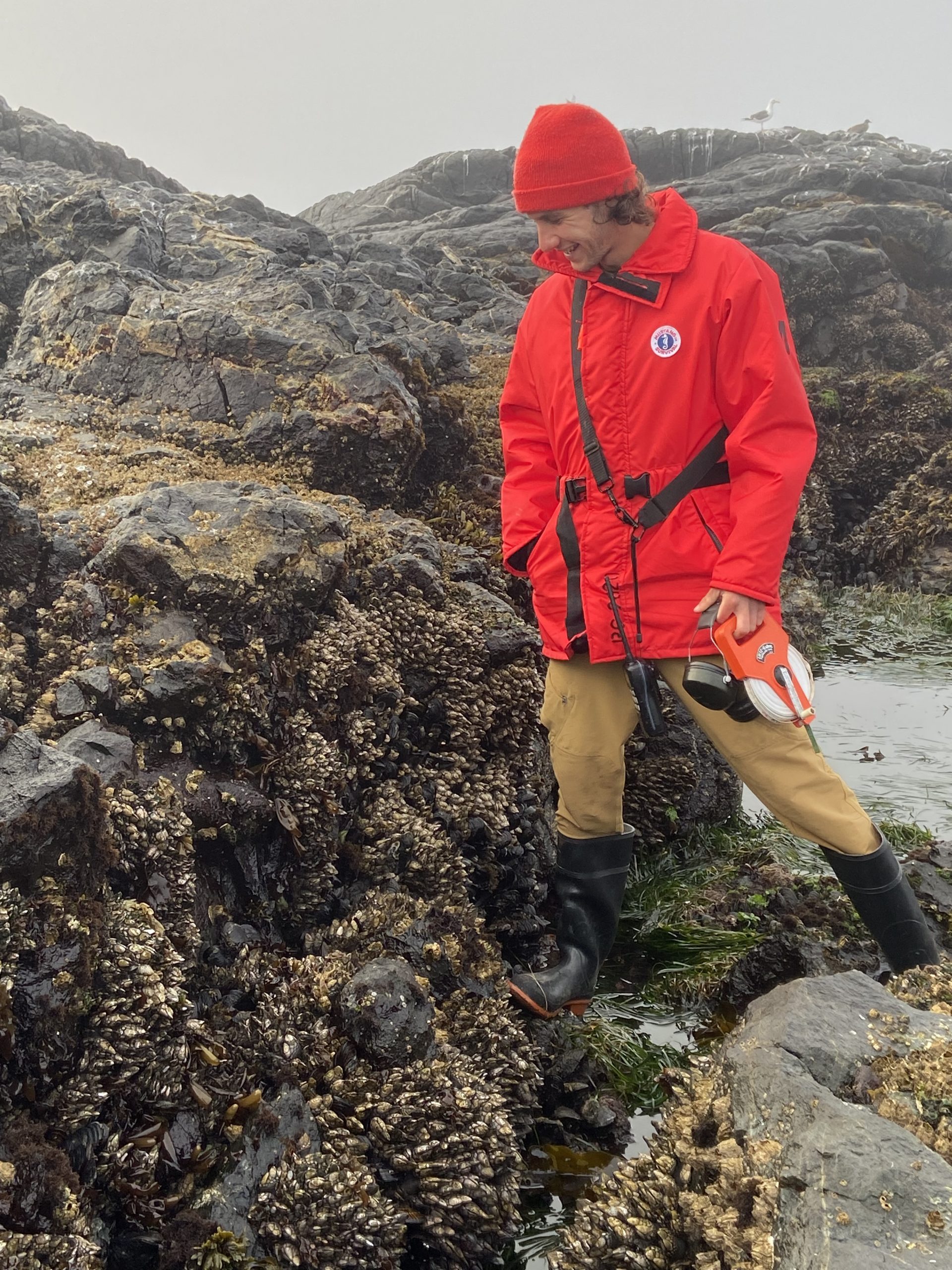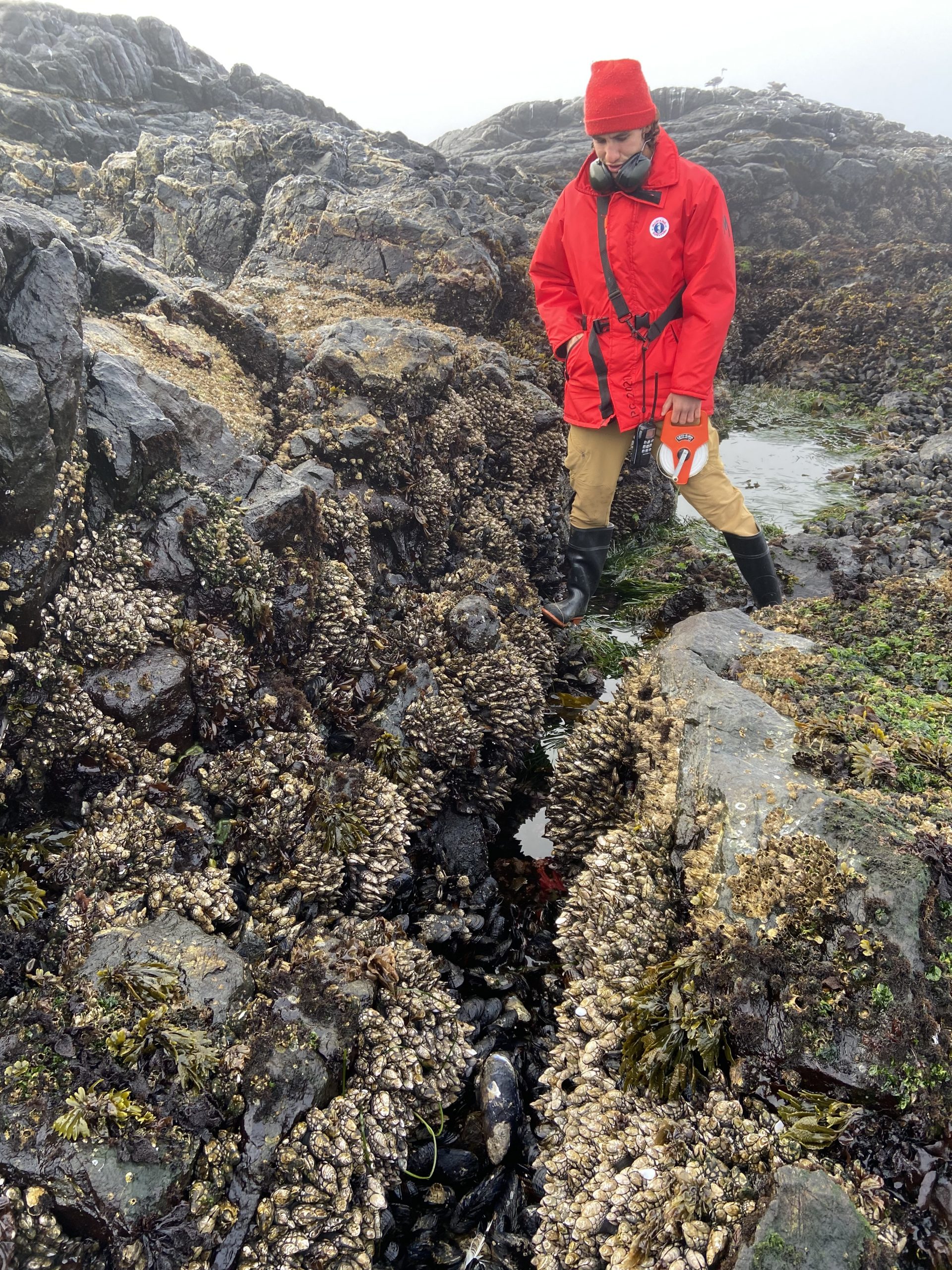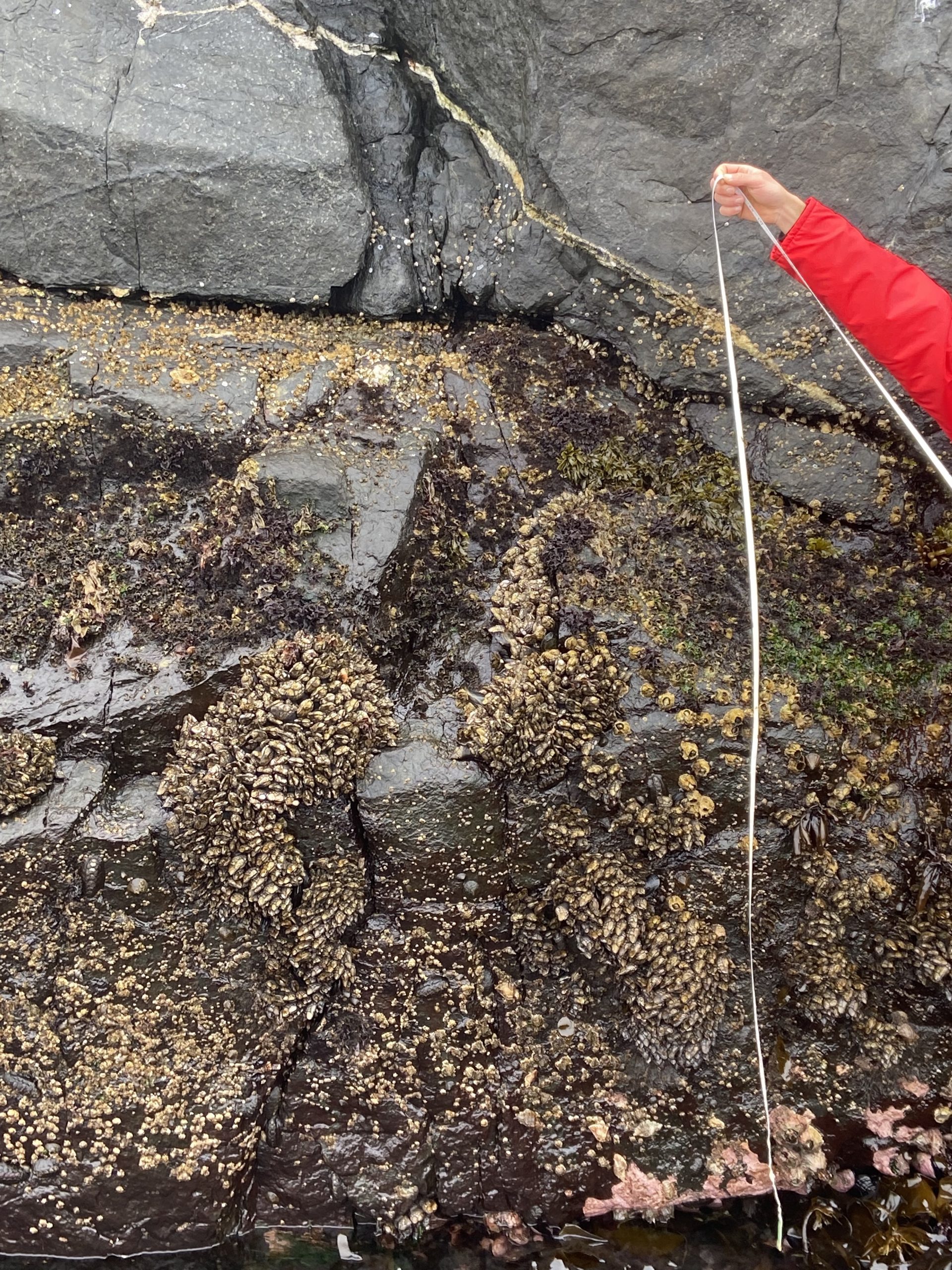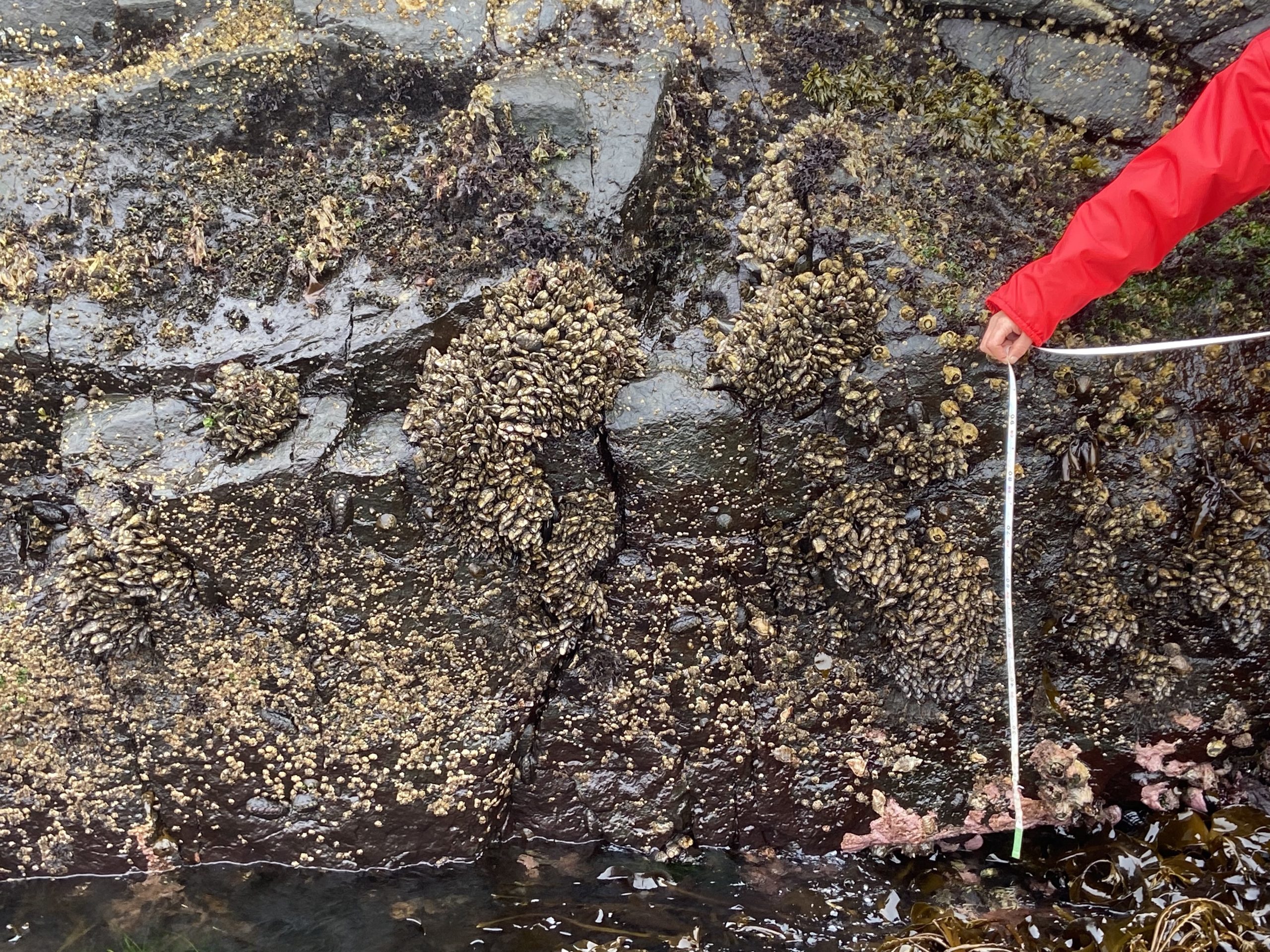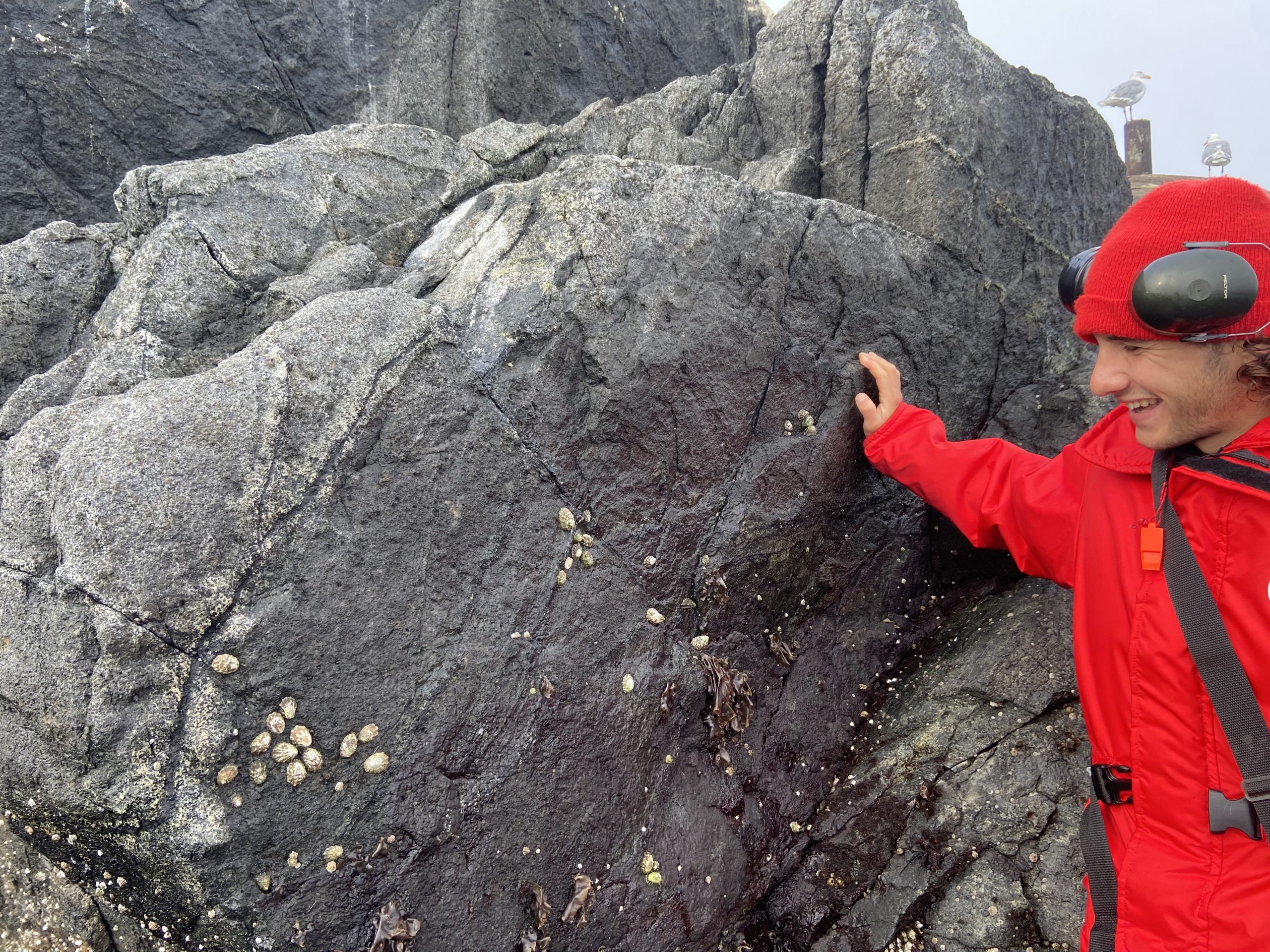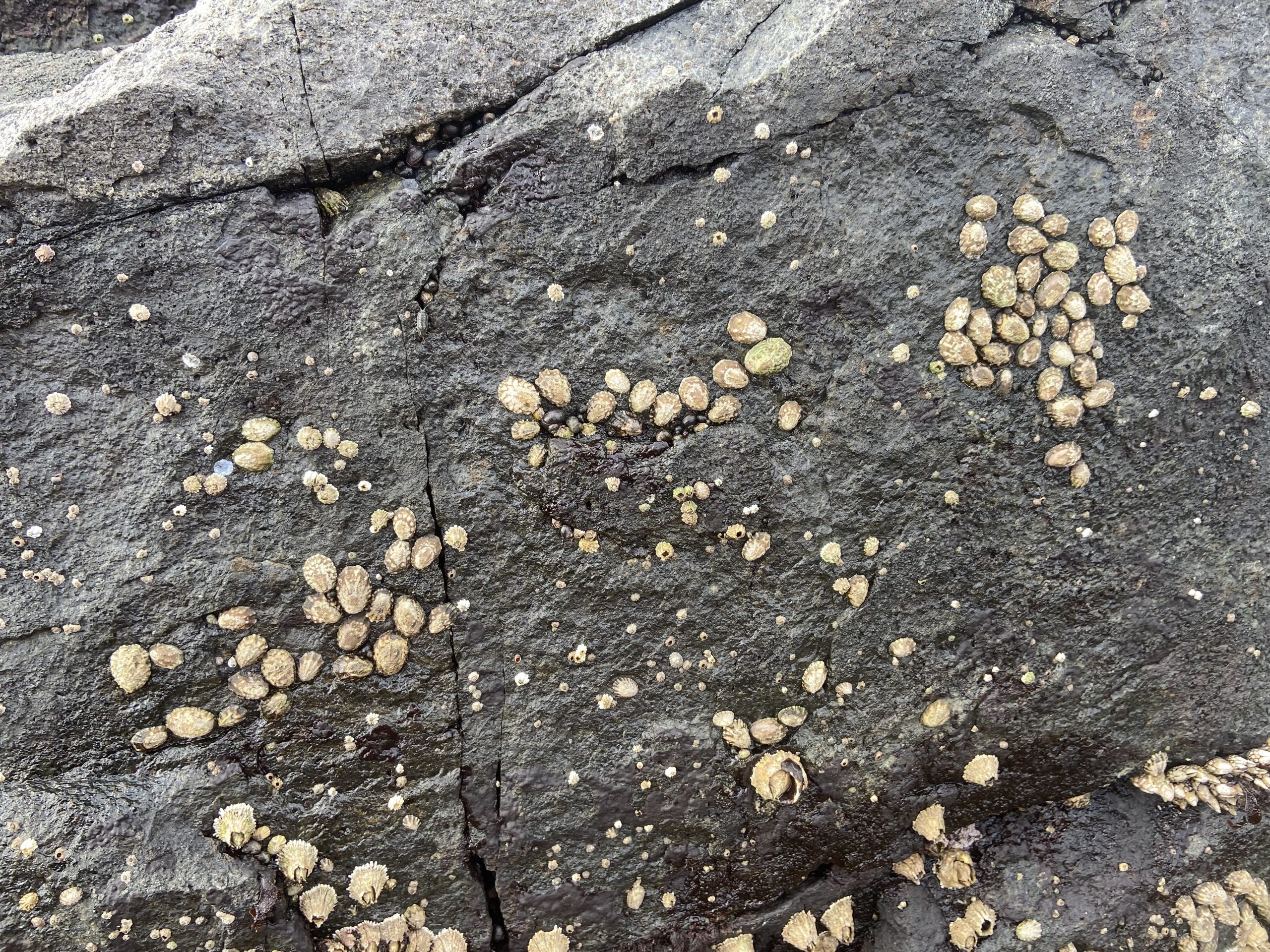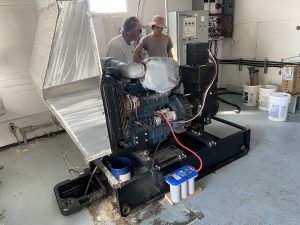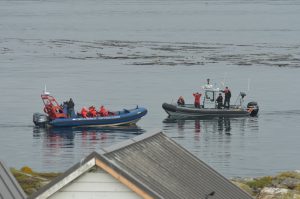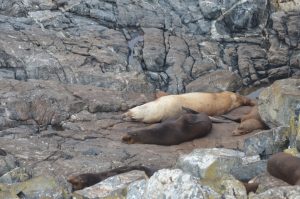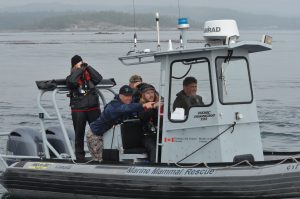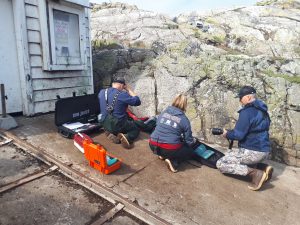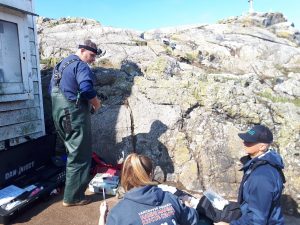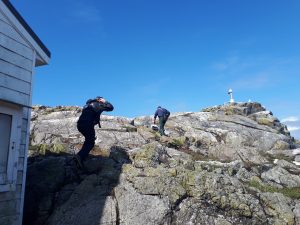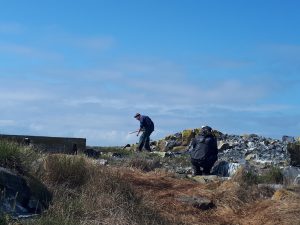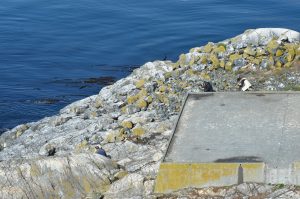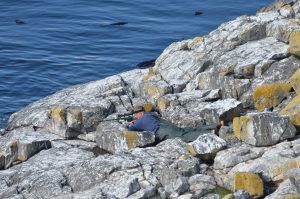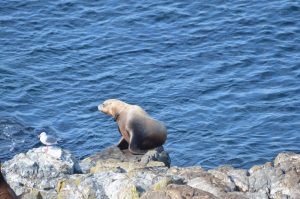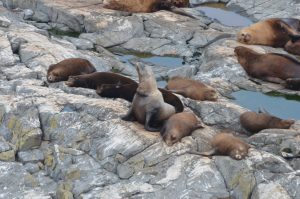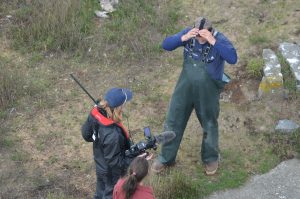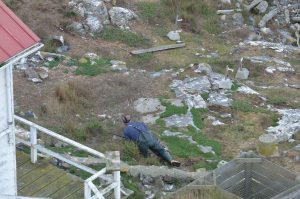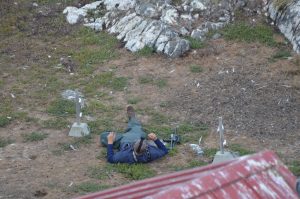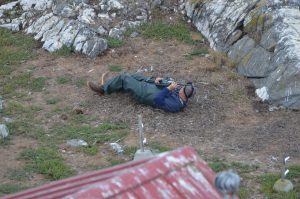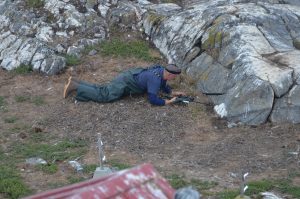The following article from the Victoria Times Colonist with a video of an interview with Dr. Martin Haulena of the Vancouver Aquarium appeared in the Times Colonist on October 29 2024 concerning the rescue of an entangled sea lion at Race Rocks Ecological Reserve:
Category Archives: Video
Race Rocks Ecological Reserve #97 Wardens Report December 2023
Wardens Report by Garry Fletcher.. December 13, 2023
Past Wardens reports may be accessed at https://racerocks.ca/category/er-warden-report/
I got a ride out on the Second Nature vessel of Lester Pearson College. Greg and Cedrick were taking out two technicians to deal with problems with the Solar panels and the diesel engine.
A herd of California Sea lions who have become accustomed to boats landing at the docks greeted us at the docks.
On the North side of the island there were mainly California sealions.
The Northern sealions predominated on the south side of the island Their distinctive growl and larger size sets them apart from the California Sea lions
- California Sea lions on the south side of the island
- Brian Blagdon from Viridian Power installing new parts on the stand
- Jordan Cole from Viriidian Energy Co-op upgrading equipment for the solar energy generation system
For the several hours that the technicians were busy in the engine room I could check out the whole island. Additional solar panels have been added to the array shown in the video below taken from the roof of the energy building/engine room. In the winter the diesel engine has to run for a few hours to help charge the batteries.
From the helicopter pad I observed a very nervous mixed herd of California and Northern sealions that were occupying the area on the West side of the island, preventing me from going in that direction to check out the tidepools.
- When walking around with Ecoguardian Derek Steriling, , we saw three elephant seals .
- We anticipate more of them to arrive in the next few weeks and look forwrd to the new pups that will be born in January
Race Rocks must be one of the few outdoor locations in British Columbia where flowers bloom year round because of the surrounding waters never dropping below 8 degrees C which moderates the temperature.
- Marigolds, planted years ago by the lightkeepers, thrive along the pathways .
- Where the sealions have hauled out , the vegetation is completley destroyed . In this area there were some Romanzoffia growing in past years but it is doubtful if they will be around now
- The Pearson College hired Ecoguardians have a continual job to do checking the temporary electric fence that cordons off the haulout areas from the vegetated part of the island
- The Canada geese however with their constant grazing , keep the grass suppressed
- In this area, although the sealions are fenced out, excessive grazing by geese damages the turf making the Indigenous burial cairns more susceptible to erosion and collapse.

There were many Black turnstones around the island. They are found here year round although they are not known to nest here.
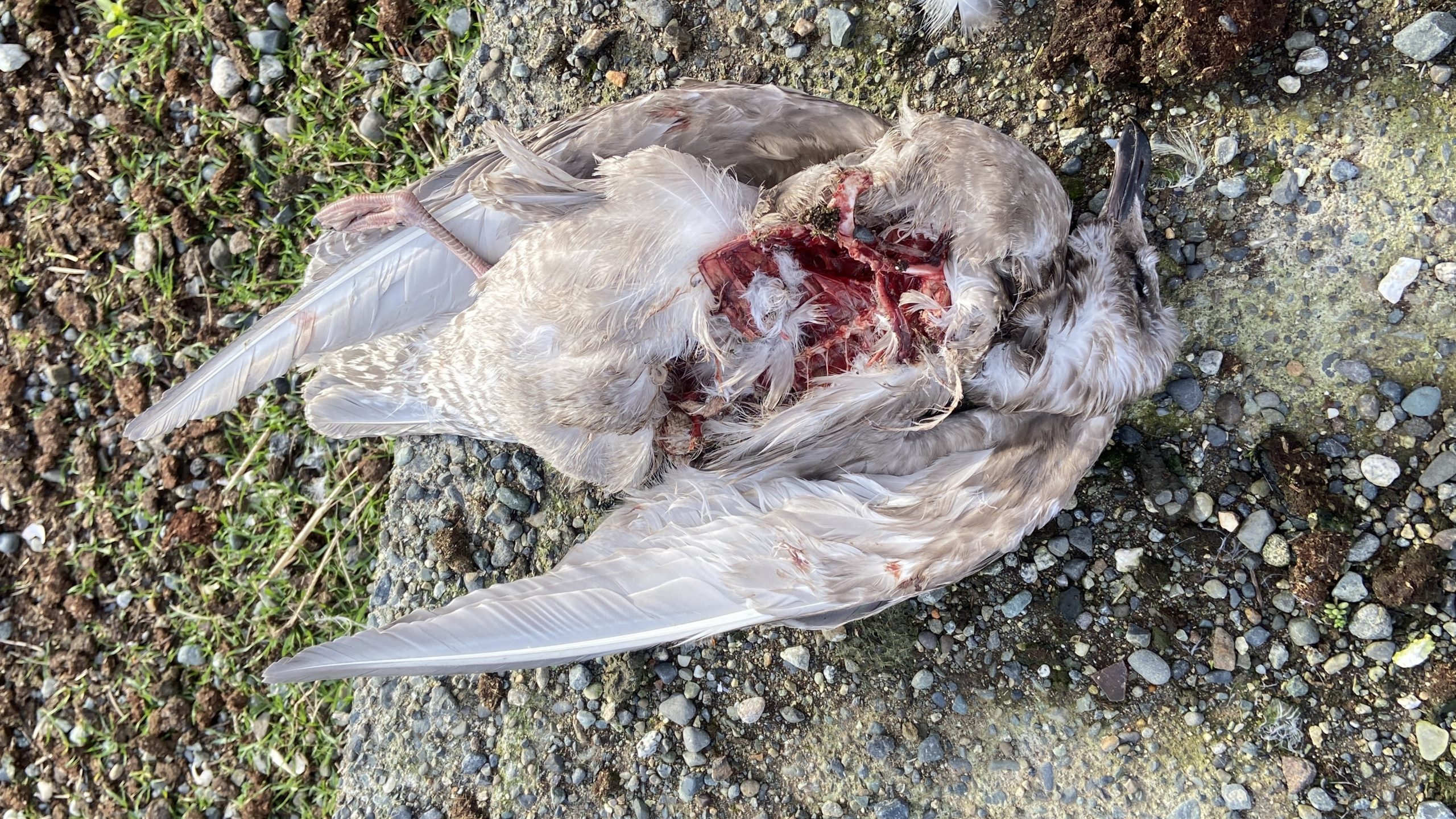 There has been a high number of gull mortalities this past year. This one is missing the breasts indicating it was a meal for the Bald Eagles. They now patrol the area regularly and this has probably contributed to the low number of overwintering gulls.
There has been a high number of gull mortalities this past year. This one is missing the breasts indicating it was a meal for the Bald Eagles. They now patrol the area regularly and this has probably contributed to the low number of overwintering gulls.
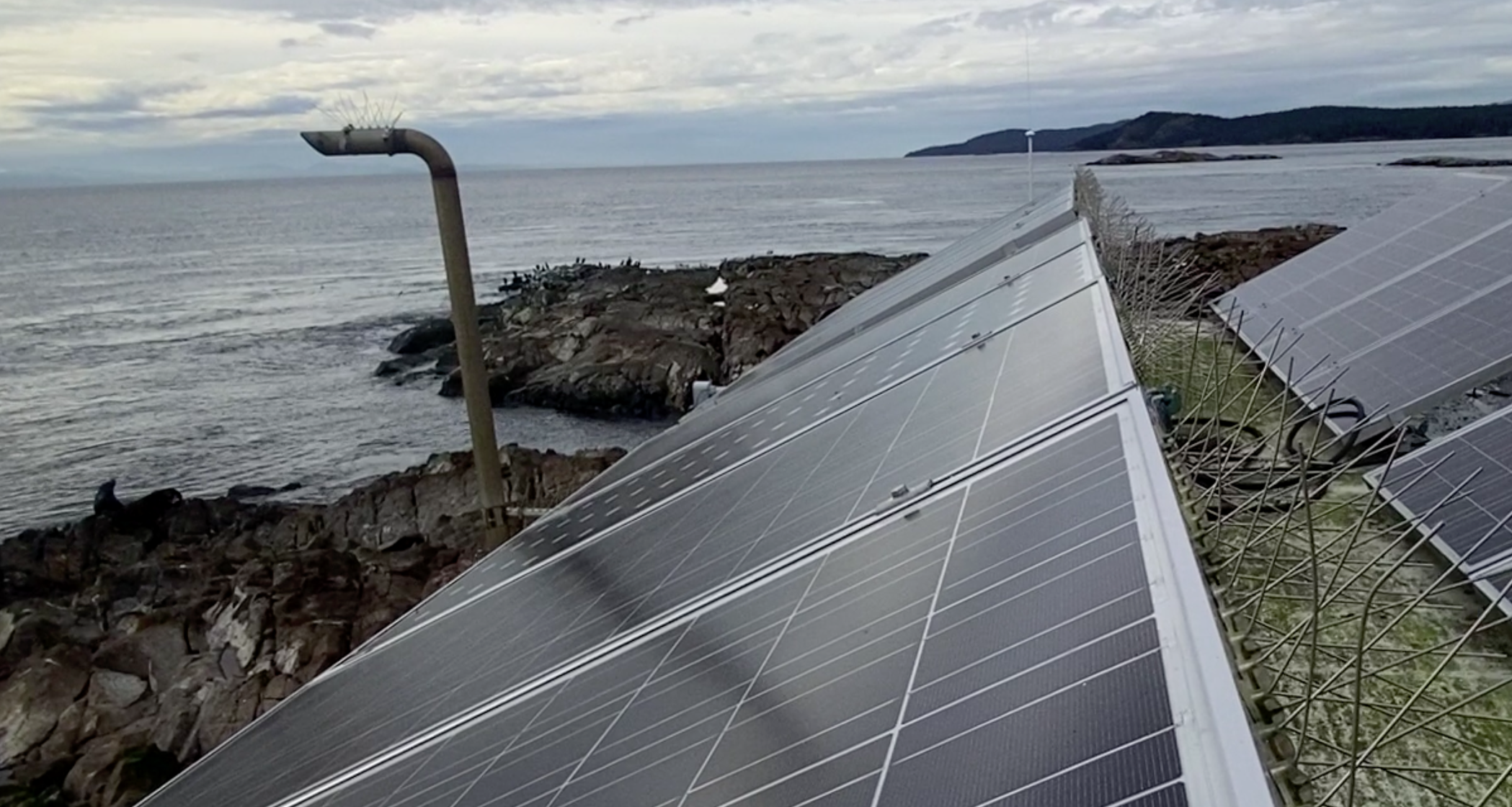 The absence in overwintering seagulls at this time of of year was very obvious. Ined some years they have number in the thousands. The south-west corner which usually is heavily populated only had a dozen of probably brants cormorants, and a small flock of less than 100 gulls was on the north-east corner of the island
The absence in overwintering seagulls at this time of of year was very obvious. Ined some years they have number in the thousands. The south-west corner which usually is heavily populated only had a dozen of probably brants cormorants, and a small flock of less than 100 gulls was on the north-east corner of the island
While I was there , Greg and Cedrick from Pearson College helped in cleaning gutters, definitely a two-man job for safety reasons, and hauling up some of the logs in the harbour by the slipway for cutting up for firewood.
- logs to haul up for firewood
- cleaning the gutters on the science house
SOME WORK YET TO BE DONE:
Managing a former light station and an Ecological Reserve can be a large job. Pearson College does an admirable job in fundraising to keep the place going. It is after all the only Ecological Reserve in the province which has human dwellings and a full time Ecoguardian paid for by Pearson College. Since 1997 Pearson College has taken on the role of management of these facilities which require constant upkeep in a very demanding physical and biological environment. I will point out several items below that are needing attention.
- For several years now this pile of lumber from the replacement of the balcony has been awaiting removal .
- BC Parks has indicated they would do it but getting action on it has not been successful.
- These are the new storage batteries for the island
- The old stotrage batteries remain in the battery room awaiting recycling.
This is the last of the old storage tanks used by the coastguard. They await removal. It is just a matter of time until the salty environment encouraging the rust could cause further problems.
Below are some suggestions I would like to make about things that are not urgent but to which attention may be paid in the future.
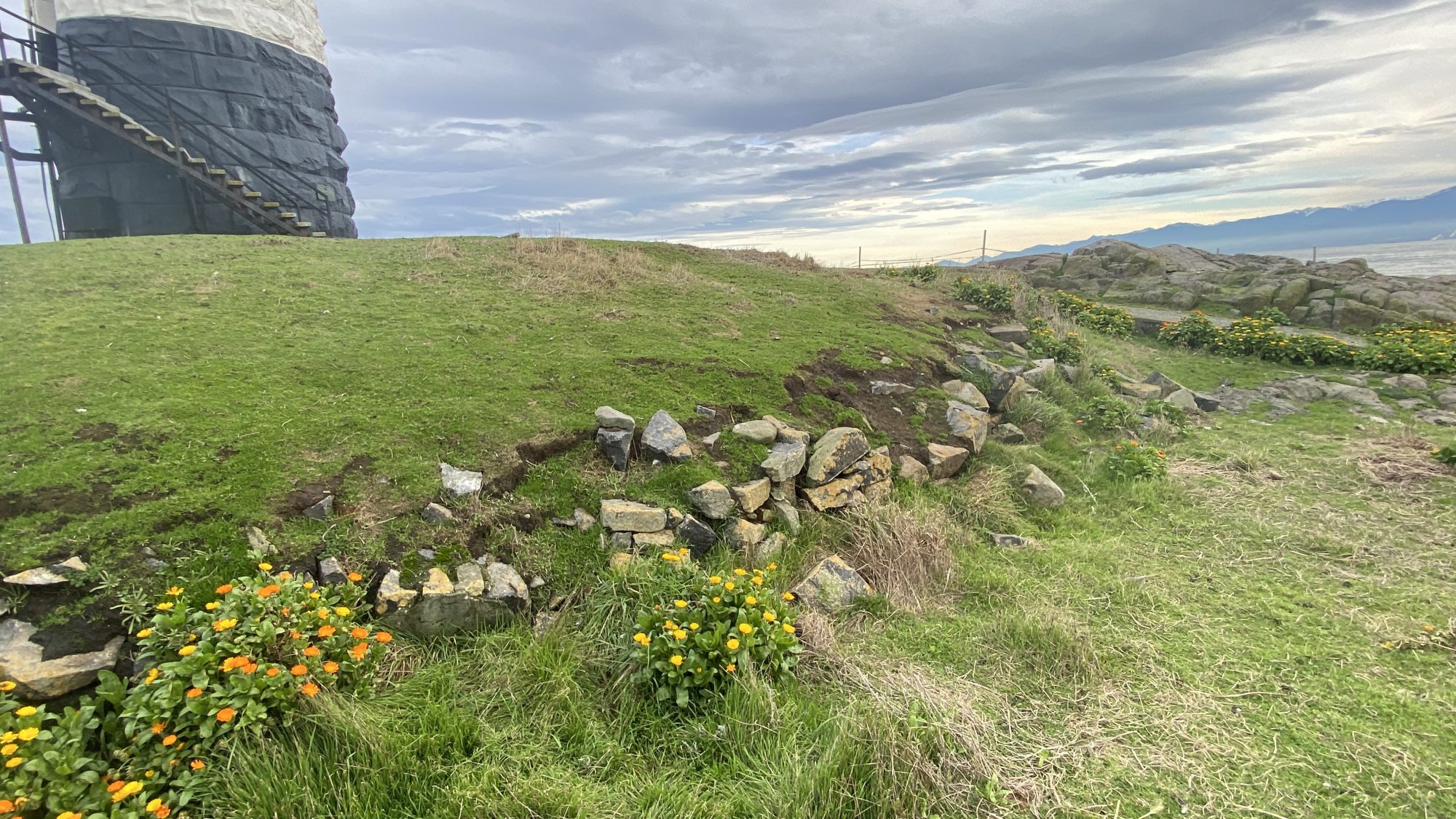 The rock wall which was eroded by the hurricane in 2006 Is still in a partly fallen state, contributing to bare soil and erosion. It wouldn’t take much effort to repair this to improve the stability of the area. ( maybe a student project week item?)
The rock wall which was eroded by the hurricane in 2006 Is still in a partly fallen state, contributing to bare soil and erosion. It wouldn’t take much effort to repair this to improve the stability of the area. ( maybe a student project week item?)
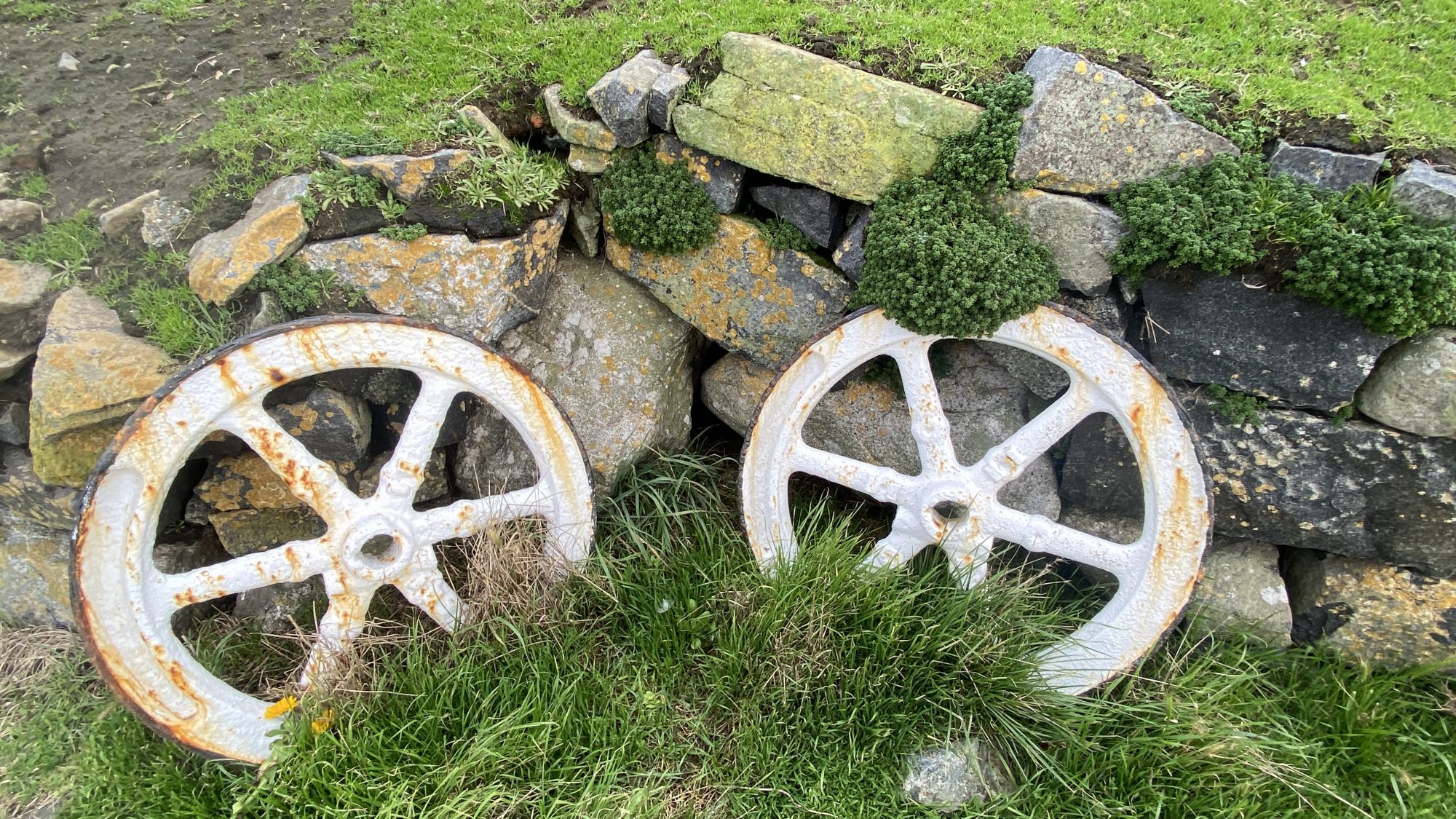 At one time the area under these artifacts was covered with bricks from the original engine room. The bricks are still there but they are now overgrown with grass. Removal of the overburden would improve the appearance of the area.
At one time the area under these artifacts was covered with bricks from the original engine room. The bricks are still there but they are now overgrown with grass. Removal of the overburden would improve the appearance of the area.
50th Anniversary of Ecological Reserves in British Columbia
Often when we visit special ecological areas our observations are restricted to a limited view. In this video, we visited six diverse Ecological Reserves with the goal of revealing some of their special features from a distant viewpoint as well as a close up one. Under a special permit from BC Parks, Jamie Frith used his drone and a macrophotographic camera to enable us to present a unique perspective on the reserves.
This video was made for the Friends of Ecological Reserves with the support of BC Parks. We started the project in March 2021 and originally were only allowed by BC Parks to film in 6 Ecological Reserves in the southern part of Vancouver Island due to restrictions of COVID 19. Plans to include ERs from the interior of the province also were not possible As those restrictions were eased mid summer, we were able to extend our range and travel North to include the Nimpkish River ER, in order to include a representative area of mature Douglas Fir forest.
Ecological Reserves which we were able to include were:
- Nimpkish RIver ER#118 start time- 1:20
- San Juan RIdge ER #83 start time- 5:58
- Oak Bay Islands ER #94 start time-11:02
- Mount Tzuhalem ER#112 start time- 16:38
- San Juan River ER#141 start time- 25:01
- Race Rocks ER#97 start time- 25.03
One of the goals of the Ecological reserves act is to provide protected places for research and education. Some reserves, especially those with seabird colonies are closed to the public and only accessible with a permit from BC Parks. Since it is illegal to fly a drone over any provincial (or federal) protected area without a permit, the use of the drone was possible only with permission and precautions for no disruption to animals. As mentioned in several of the interviews, because of the sensitive ecological nature of the areas, the public is not encouraged to visit Ecological reserves.
THE 50th ANNIVERSARY:
On April 2, 1971, the Government of British Columbia became the first jurisdiction in Canada to pass legislation to protect Ecological Reserves, places set aside primarily for ecological research and education, not recreation. The Ecological Reserve Act led to an Order in Council that established the first 29 ecological reserves on May 4, 1971. Fifty years later, British Columbia has 148 ecological reserves across the entire province. This video features just a few of the ones on Vancouver Island. In 2021, the BC government proclaimed April 2nd as Ecological Reserves Day in commemoration of the 50th anniversary of the passing of the Ecological Reserve Act.”
Protecting rare species and ecosystems is just one of the reasons to have an ER established. Equally important was protecting representative examples of natural ecosystems. See the wording in the Purpose section of the ER Act:
Garry Fletcher
Revisiting Intertidal Transect sites at Race Rocks
Watden’s Report, September 3, 2021
I was fortunate to be able to get out to Race Rocks on one of the last morning low tides of the season. I wanted to revisit intertidal locations around the island in order to take photos of belt transects in locations I had recorded with baseline studies back in May of 1995. Photographic transects are valuable records in the event of changes that may happen along coastlines, usually caused by humans and/or by extreme weather events .
Images taken in 1995 can be seen in this index on transects: https://racerocks.ca/ecology/ecological-monitoring/
The belt transect files with images will be linked here when they have been processed :
Peg 6 Peg5: Peg 5a Peg 5b Peg 14a, Peg 14b Peg 115.
I was fortunate to have the assistance of Cedric Torres, the ecoguardian in doing the work on the transects.
At this time of year the island is populated by many young glaucous-winged gulls, some fully fledged and other son various states of maturity. There were also a number of mortalities around the island which is typical for this time of year in a breeding colony. In the following videos a number of behaviours of the chicks are shown .
Harbour seals with pups are hauled out on the southern most reef, note the current was still ebbing in this video.
The California and Stellers sea lions have started coming back in large numbers. typically the Californias outnumber the Stelllers at this time of year.
Beneath the tower, the Californians( barking) are predominant: but there is alos a mix of the growling Stellers.
On the East side cove a large group of Californian Sea lions were hauled out. The ones here were very skittish, any movement near the east end of the house would startle them
.
Other observations : two orcas in Race Passage ( surprizingly with no whale watching boats nearby. The nice weather on Sept 3 brought out many whale watching boats and as usual they approach closer to the north side in front of the docks than necessary and well within the distance for viewing marine mammal colonies. The sea lions on that side are more habituated to the presence of humans and these boats than on other parts of the island, but many still go into an alert stage when the boats pass by.
Only a few pelagic cormorants were seen on the south west tip of the island.
The Calendula escapes from gardens of lightkeepers over 50 years ago still exist along the pathways, although the dry summer has been challenging. I was able to make a new species observation of these green blow flies on the flowers.
This summer with the heat dome experience on Vancouver Island there have been reports of damage to intertidal life. I took these images of high intertidal level barnacles in the arintertidal between peg 14 and 15. which show very little damage from this event,
We checked out Anita’s pool #6 . The intertidal life in the area has been unchanged for decades.
On the west side of the cliff near peg 5 , we took these images on the vertical rock face as records of barnacle distribution:
And near peg 15 we noted these finger limpets in a shaded rock at an extreme high intertidal elevation.
- Note peg 15 in upper part of photo
- Finger Limpets
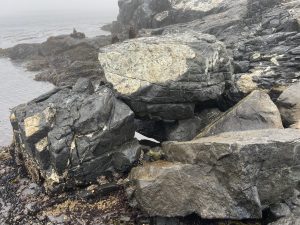
And a follow-up photo of The ill-fated tidepool #13 which was readjusted in the hurricane of 2006
Knowledgeable Visitor
My solitude has been broken,
Yesterday Garry Fletcher,a former Pearson College teacher and current ecological reserve warden, came to the island to spend the night. He was taking advantage of the last weekday low tide for the next 8 days to get some pictures of the intertidal life. I sure am glad that he did!
Facility Work:
His stay started with an oil change of the diesel generator that is on the island. This has to be done every 200 hours.
Cleaning of solar panels (daily)
Cleaning of windows (as needed)
Cleaning interior of secondary residence
The next morning we attacked the reason for his visit first thing in the morning while the tide was still dropping
Here I am paying out the tape on peg 15 to then take pictures of the intertidal life at low tide. Garry was collecting this data to compare with baseline photo transects taken many years ago.
Ecological Notes:
Several Orcas were sighted in Race Passage.
Garry also took this video of a sea otter passing us when we were working in the intertidal area.off the North East corner of Great Race Island.
noted Western X Glaucous-winged Gull hybrid by helicopter pad
Weather – Current: http://www.victoriaweather.ca/current.php?id=72
Weather – Past: http://www.victoriaweather.ca/station.php?
Environment Canada forecast:
Humpback Whales Feeding off Race Rocks
There has been 2 humpbacks hanging around the Becher Bay – Race Passage for the last couple of weeks. They have always been a little bit distant from the Lighthouse, but on December 30th 2020 they came right up to the SW corner of the lighthouse and did some feeding right at the current line. There’s lots of turbulence, so it could be some bubblenetting or lungefeeding. Really cool to see them use the crazy currents around Race Rocks to get a meal in.
Elephant Seal Pup Growth – Day by day
The first Elephant Seal pup of the 2021 birthing season came on December 22 2020, and began it’s 23 days of nursing the day after (it took him awhile to figure out how to nurse). Elephant seal pups only have a couple of weeks to get big enough and healthy enough to survive alone after their moms wean them and abandon them on Race Rocks; which means their life is essentially just to feed, nap, and snuggle with their moms. It’s hard to show how impressive it is to see how fast they put on weight, with the pup doubling in size over the first few days. Here’s a video of the growth of ‘Cheermeister’ over his first 12 days of life.
https://youtu.be/ltMsnNRYTmU
Also see other posts on elephant seal pups born at Race Rocks, the most northerly pupping colony for e-seals on the Pacific coast: https://www.racerocks.ca/tag/pup/
Diving with Sea lions –and foolish diver behaviour
I am posting these videos from Youtube here with a precautionary warning; The behaviours demonstrated by some the divers could be very dangerous. Trying to touch sealions and putting a hand in their mouth and even staying in the water when they get agitated is very unwise. When a sealion starts snapping his teeth at an intruder it is best to move on. A sealion bite can be very toxic, and they have been known to ram into divers , especially if a diver enters a zone where they have been actively hunting for fish. Department of Fisheries regulations warn against any interaction with marine mammals
Sea Lion Rescued from Plastic Entanglement
A team comprised of the DFO and Vancouver Aquariums Marine Mammal Rescue (MMR) came out to Race Rocks on September 16th to help the entangled sea lions we’ve spotted over the last few weeks. Leaving from Pedder Bay at 0900, they arrived in two RHIBs at the reserve shortly after. After observing the struggling animals over the last while and communicating information with MMR, they were a welcomed sight.
- MMR and DFO arrive at the edge of the reserve.
- An eco tourism boat encounters the DFO support vessel in front of the jetty.
Right away we spotted three possibly entangled sea lions from the lighthouse (unfortunately none of these three being the animals we photographed previously). We then landed the team of vet techs and veterinarian Marty at the jetty to assess the situation. It was decided that one of the sea lions resting by the water between the guest house and the helicopter pad was our best rescue candidate.
- The entangled sea lion.
- Visual contact from the water!
Marty and a videographer from Vancouver Aquarium approached over the helicopter pad from the direction of ‘Camera 5’. They got into position and a shot was taken, but the tranquilizer dart bounced and the sea lion fled into the water.
- Preparing the tranquilizer.
- The sea lion was estimated to weigh 500kg, and the dose had to be measured accordingly.
- (1) Heading towards the helicopter pad.
- (2)
- Marty gets into position below the helicopter pad.
- Lining up the shot with the tranquilizer gun.
- (1) Another angle of the sea lion
- (2)
From the lighthouse we were able to follow its movements and keep the team apprised by radio. There was uncertainty about whether or not it received a partial dose of the tranquilizer as it floated in strange positions/patterns. Moving around Race Rocks to the water beside the solar panel/generator building, it hauled out again and another shot at it was lined up from one of the boats. The angle wasn’t quite right, and it again fled into the ocean and couldn’t be spotted. It was around 1400, and everyone took a break to have some food.
After this, everyone considered calling it off as it was getting late and we couldn’t locate the animal. At the last moment, with both boats ready to head back to Pedder Bay, it was spotted from the lighthouse (resting on the rock mound on the NW point of Great Race Rock)! Tranquilizing was attempted from water, but the dart bounced again and landed in the water and was recovered. Here’s a short video of that:
After that, it ended up too far from the water to try another shot by boat, so in a final effort the one boat landed Marty and the team again while the other stayed on the water to support. With no cover available between him and the animal, Marty had no choice but to crawl about one hundred feet in order to take the shot.
- The sea lion is sighted again on the point of NW Race Rock.
- MMR team gets back onto land.
- Gearing up for the land approach. Hopefully some good video was captured!
- Marty moves over challenging terrain near our compost bins, staying low while managing to carry the large tranquilizer gun.
- (1) The electric fence was off, but it still was an obstacle as standing would have frightened the surrounding sea lions into the ocean!
- (2)
- (3)
We were able to capture the following footage of the sea lion being darted, going into the water, and then after a tense 20 minutes during which a pod of transient orcas appeared in the reserve (who sometimes eat sea lions), it was found! The team proceeded to cradle the animal between their vessels and remove the plastic band. Then, they injected a reversal drug to reverse the tranquilizer before letting it go.
Everyone was relieved to have successfully helped an animal in need. We have suggested that future disentanglement efforts might have a better chance if extended to overnight stays in the guest house, and perhaps coordinated and executed in a more timely manner in relation to the animal sighting(s). This time we were unable to find the original animals that we had previously spotted, since it took quite a while to organize the rescue attempt. A big thank you to everyone who came to help this sea lion and teach us about their work!
Check out rescue.ocean.org to learn more about the Vancouver Aquarium Marine Mammal Rescue program, and Ocean Wise.
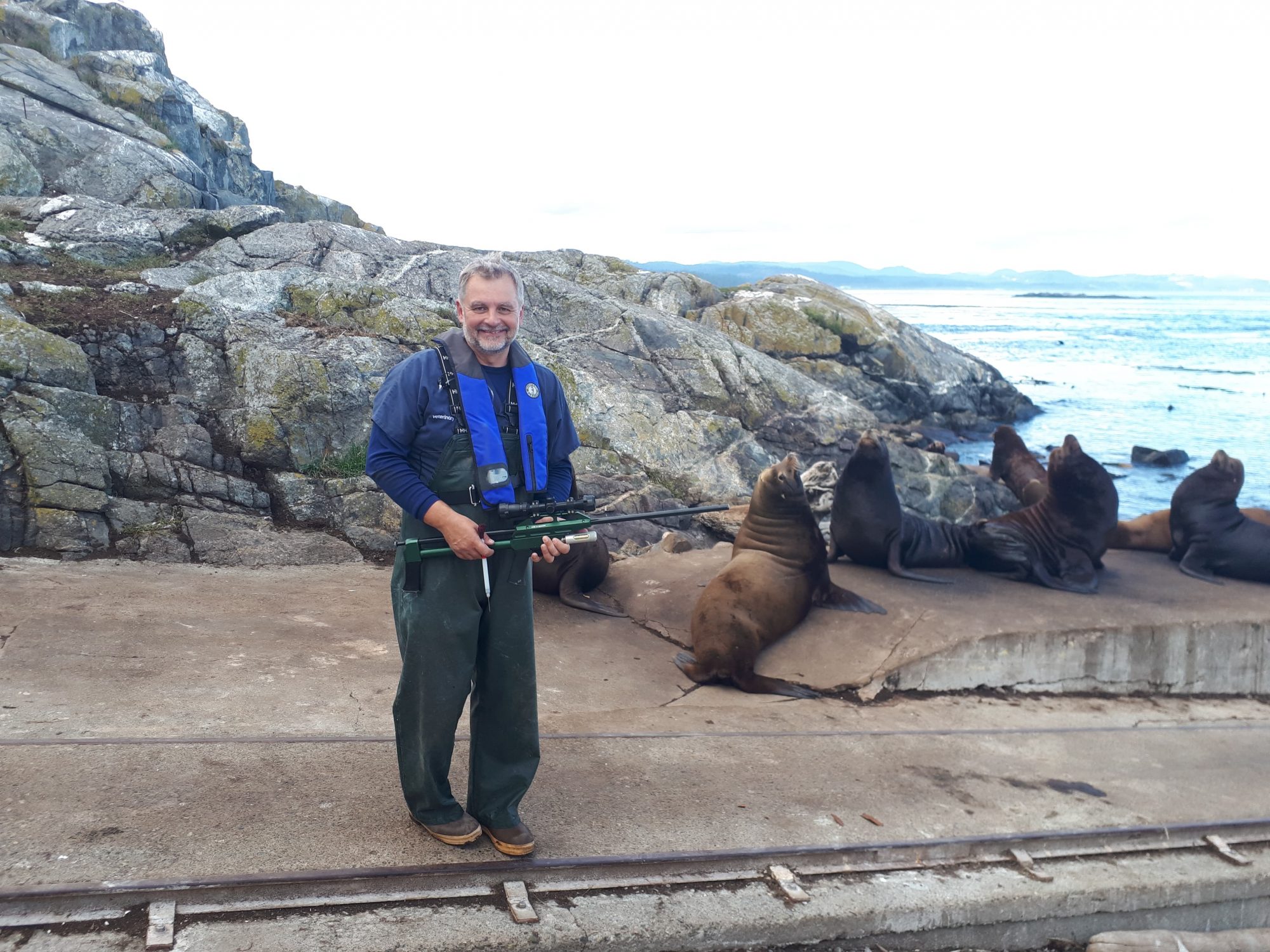
Thanks to the rescue team, one more sea lion has a better chance of survival! (vet Marty holding the dart gun and dart used to tranquilize the sea lion)
See media coverage: https://www.bclocalnews.com/news/plastic-band-removed-from-neck-of-greater-victoria-sea-lion-2/
Rockfish Race Rocks ( Ecological Reserve)
https://www.youtube.com/watch?v=Pd-94YlgHVg


